The town of Liliw1 in Laguna2 is known as the Flip-Flops Capital of the Philippines because of its thriving shoe industry. But do you know that this town has a red-bricked Catholic church with a beautiful retablo3 and spacious grounds, among others?
If not, allow Titas S to share with you ten facts about Saint John the Baptist Parish Church:
1.Saint John the Baptist4 Parish Church, Liliw Church or Lilio Church, is the Roman Catholic church in the town of Liliw1, in the province5 of Laguna2, in the Calabarzon6 Region7 of the Philippines.


Liliw Church NHCP historical marker, 1939, by Ryomaandres, own work, CC BY-SA 4.0, created 3 October 2019, https://en.wikipedia.org/wiki/List_of_historical_markers_of_the_Philippines_in_Calabarzon#/media/File:Church_of_Lilio_NHCP_Hisorical_Marker.png
2. This church is known for its striking red bricked and adobe facade and Baroque style8.
 Source: https://www.facebook.com/SJBP.Liliw/photos/a.672539432862110/1917908028325238/?type=3&theater
Source: https://www.facebook.com/SJBP.Liliw/photos/a.672539432862110/1917908028325238/?type=3&theater
 Source: https://www.facebook.com/pg/SJBP.Liliw/photos/?tab=album&album_id=672539432862110&ref=page_internal
Source: https://www.facebook.com/pg/SJBP.Liliw/photos/?tab=album&album_id=672539432862110&ref=page_internal
 Source: https://www.facebook.com/SJBP.Liliw/photos/a.672539432862110/1815680878547954/?type=3&theater
Source: https://www.facebook.com/SJBP.Liliw/photos/a.672539432862110/1815680878547954/?type=3&theater
On top of the wooden door entrance is a white sculpted image of the Baptism of Jesus by St. John the Baptist4. It also contains stained glass images along with red bricked columns.
3. Its feast is celebrated every August 29, known as the Martyrdom of St. John the Baptist9.
4. Liliw was established as a reduccion10 by Franciscan priests Juan de Plasencia and Diego Oropesa in 1578. It was annexed as a visita11 of Nagcarlan12 until it became an independent parish with Father Miguel de San Lucas as first parish priest in 1605 by the Franciscan missionaries.
 Source: https://www.facebook.com/SJBP.Liliw/photos/a.2356415447807825/2814581771991188/?type=3&theater
Source: https://www.facebook.com/SJBP.Liliw/photos/a.2356415447807825/2814581771991188/?type=3&theater
5. The first church was built in wood in 1620. A stronger stone church was built from 1643 to 1646, and was partially destroyed during the 1880 Luzon earthquake. It was reconstructed in 1885 and was partially burned in April 6, 1898.
6. The church has three retablos3, or altars, finished in gold leaf.
 Interior, Saint John the Baptist Parish Church, Liliw, Laguna – Source: https://www.facebook.com/SJBP.Liliw/photos/a.2825494230899942/1816522191797156/?type=3&theater
Interior, Saint John the Baptist Parish Church, Liliw, Laguna – Source: https://www.facebook.com/SJBP.Liliw/photos/a.2825494230899942/1816522191797156/?type=3&theater
The retablo mayor (main altar) at the center contains thirteen niches across four levels, housing statues of saints. The center of the lowest level contains the tabernacle.  Source: https://www.facebook.com/SJBP.Liliw/photos/a.672539432862110/2534156823367019/?type=3&theater
Source: https://www.facebook.com/SJBP.Liliw/photos/a.672539432862110/2534156823367019/?type=3&theater
The two minor retablos3 on each side houses four niches of saints. Originally, these two minor retablos were dedicated in honor of the town’s second patrons, San Buenaventura13 and San Antonio de Padua14. It was restored by following the description of a visiting friar, through the efforts of Director Emmanuel “Maning” Borlaza, Mrs. Concepcion Brosas and the people of Liliw.
7. From the church’s entresuelo15 entrance, a small passageway to the left leads to a small chapel named Bonaventure Chapel, or Capilla de San Buenaventura, in honor of San Buenaventura13, through the efforts of Rev. Fr. Philip Atienza.

San Buenaventura statue, Saint John the Baptist Parish Church, Liliw, Laguna – Source: https://www.facebook.com/SJBP.Liliw/photos/a.672539432862110/2664315840351116/?type=3&theater
 Prayer to St. Bonaventure, https://www.facebook.com/SJBP.Liliw/photos/a.672539432862110/2528332513949450/?type=3&theater
Prayer to St. Bonaventure, https://www.facebook.com/SJBP.Liliw/photos/a.672539432862110/2528332513949450/?type=3&theater
At the center of the chapel is an image of San Buenaventura13 made by a local Paete16 carver, Peter Paraiso. The image is enclosed in a retablo3 with narra wood in the patio grounds as its material. In 1664, the image wept and sweated blood, as witnessed by Padre Juan Pastor and 120 others.
In recognition of this miracle, the first major bell in this church was dedicated in honor of San Buenaventura13.
 Source: https://www.facebook.com/SJBP.Liliw/photos/a.672539432862110/1370189496430430/?type=3&theater
Source: https://www.facebook.com/SJBP.Liliw/photos/a.672539432862110/1370189496430430/?type=3&theater
8. On the right side of the church’s entrance is the adoration chapel of the church. It was originally the baptisterio (or baptistery) of the church. The original marble baptismal font was intact and kept inside the parish museum.
9. The grounds outside the church have been developed to promote Christian teachings for pilgrims. At the middle of the patio, named Patio de Sagrada Familia, is a white statue of the Sacred Heart of Jesus17. On both sides, there are elevated white statues of the different saints, for the patron of each barangay18 in the town.
I personally appreciate the spacious patio cum town parking lot, available for a minimal fee of PHP20. After attending mass, individuals, families and groups can just walk and proceed to the main street lined with different footwear shops, restaurants, pasalubong19 stalls, seasonal fruits, etc.
10. This parish church is unique because one of its parish priests became a saint, Saint Pedro Bautista20.
 Source: https://www.facebook.com/SJBP.Liliw/photos/a.2356415447807825/2812152472234118/?type=3&theater
Source: https://www.facebook.com/SJBP.Liliw/photos/a.2356415447807825/2812152472234118/?type=3&theater
The information was obtained from the Facebook account “Saint John the Baptist Parish Liliw, Laguna” and the Wikipedia page “Saint John the Baptist Parish Church (Liliw)”.21
So, have I convinced you visit this church? Why not include it in your next Laguna2 Visita Iglesia22?
You know what, dearest readers? Tita S was blessed to have done an early 2020 Visita Iglesia22 with her college buddies on March 8, before the Presidential proclamation of a of a public health emergency for the entire country due to COVID-19. See her posts so you can, somehow, virtually join her, and imagine that you also did the Visita Iglesia because it might be impossible to visit seven churches during this pandemic for Holy Week 2020: LAGUNA VISITA IGLESIA 2020: PART 1 (OF 2) and LAGUNA VISITA IGLESIA 2020: PART 2 (OF 2)
This is not a sponsored post. I just want my readers to know more about the Philippines.
Did you find this post informative? I would like to hear from you about your visit to Saint John the Baptist Parish Church.
See other interesting places through other posts in this category and other categories of SCapades, Pinoy Delights, and Smart Traveler – Now You Know, Short and Simple, and Say, Say, Say. Happy reading, and I hope that you will appreciate what I shared and some of the featured destinations will be part of your future travel plans!
Remember to share this post with your friends, follow me by clicking on the bottom right corner of your device, and do not forget to like this post. Thank you.
– – – – – – – – – – – – – – – – – – – – – – – – – –
The following terms are defined for interested readers, especially those with “Senior-Moments”, not familiar with Filipino, Catholic and architectural terms, and those too busy or lazy to Google such terms:
1Liliw is a fourth class municipality, in the province5 of Laguna2, in the Calabarzon6 Region7 of the Philippines. It is located at the foot of Mt. Banahaw and is one of the highland towns at the southern extremity of Laguna. It is bounded on the northwest by Sta, Cruz (Laguna), on the west by Nagcarlan (Laguna), on the northeast by Magdalena (Laguna), on the east by Majayjay (Laguna), and on the south by Mount Banahaw, and Dolores (Quezon). It was founded on August 29, 1571, and now has 33 barangays18. The information was obtained from the Wikipedia page “Liliw”23 and http://calabarzon.dilg.gov.ph/132-old-lgus/old-laguna-lgus/589-liliw
2Laguna is a province5 in the Calabarzon6 Region7 of the Philippines, located southeast of Metro Manila, north of Batangas, west of Quezon, south of the province of Rizal, and east of Cavite. This is the 7th richest province in the country, and the third largest province in the region. It hugs the southern shores of Laguna de Bay, the largest lake in the country. It is composed of 24 municipalities24 and 6 cities. The provincial capital is the town of Santa Cruz since 1858, after Bay (1581-1688) and Pagsanjan (1688-1858). It is historically one of the first provinces in the Philippines to have been visited by Christian missionaries. Its main natural resources are its agriculture and fisheries, owing to its position near Laguna de Bay and the surrounding lowlands. The information was obtained from the Wikipedia page “Laguna (province)”25
3A retablo is a Spanish term for: (a) an elaborate frame or shelf enclosing decorated panels or revered objects above and behind an altar, typically painting or sculpture, or a combination of the two; and, (b) a devotional painting or other image above and behind an altar. The information was obtained from the Wikipedia page “Retablo”26 and https://www.lexico.com/en/definition/retable.
4John the Baptist (late 1st century BC – 36 AD) was a Jewish itinerant preacher27 in the early 1st century AD. He is also called John the Forerunner in Eastern Christianity, John the Baptizer, John the Immerser in some Baptist traditions, and the prophet John in Islam. He was the precursor or forerunner of Jesus since he announced Jesus’ coming and prepared the people for Jesus’ ministry. John used baptism as the central symbol of his pre-messianic movement and baptized Jesus. The New Testament states that John was sentenced to death and subsequently beheaded by Herod Antipas after John rebuked him for divorcing his wife, Phasaelis, and then unlawfully wedding Herodias, the wife of his brother, Herod Philip I. John is honored as a saint in many Christian traditions. The information was obtained from the Wikipedia page “John the Baptist”.28
5A province is the primary administrative and political division in the Philippines. It is the second-level administrative sub-division of a region7. There are 81 provinces (called “lalawigan”) in the Philippines. Each province is governed by an elected legislature called the Sangguniang Panlalawigan, and by an elected governor. Remember, a province in the Philippines is divided into cities and municipalities24 (or towns), which in turn, are divided into barangays18, formerly called barrios. The information was obtained from Wikipedia page “Provinces of the Philippines.”29 See a related post: Foreign Seniors Ask: WHAT ARE PROVINCES IN THE PHILIPPINES?
6Calabarzon, or Region IV-A, or Southern Tagalog Mainland, is a Philippine region7 located in the island group of Luzon, with Calamba as its regional center. CALABARZON is an acronym for this region’s five provinces5: CAvite, LAguna2, BAtangas, Rizal, QueZON. It is the most populated region in the country and the country’s second most densely populated after Metro Manila. This region is located south of the National Capital Region (NCR), bordered by the provinces of Aurora, Bulacan and Metro Manila in the north, Manila Bay in the west, Tayabas Bay and Sibuyan Sea in the south, and Lamon Bay and the Bicol Region in the east. The information was obtained from the Wikipedia page “Calabarzon”30 and https://lga.gov.ph/region/region-iv-a.
7A region is an administrative division based on geographical, cultural and ethnological characteristics. Each region is further subdivided in provinces5, composed of cities and municipalities24 (or towns), which in turn, are divided into barangays18, formerly called barrios, according to Wikipedia page “Regions of the Philippines”.31 See a related post: Foreign Seniors Ask: WHAT ARE THE REGIONS OF THE PHILIPPINES?
8Baroque architecture is characterized by: domes, often painted with a sky filled with angels and sculpted sunbeams, suggesting a vision of heaven; a quadratura32; grand stairways, winding upwards in stages, giving changing views from different levels; cartouche33 in elaborate forms and sculpted frames which break up the surfaces and add three-dimensional effects to the walls; mirrors to give the impression of depth and greater space, particularly when combined with windows; incomplete architectural elements like frontons with sections missing, causing sections to merge and disorient the eye; chiaroscuro, the use of strong contrasts of darkness and light for dramatic effect; overhead sculpture, on or just below the ceiling, made of wood (often gilded), plaster or stucco34, marble or faux finishing, giving the impression of floating in the air; Solomonic columns35 which give an illusion of motion; and, elliptical or oval spaces to eliminate right angles. The information was obtained from the Wikipedia page “Baroque architecture”.36
9The Martyrdom of St. John the Baptist refers to his beheading on the orders of Herod Antipas (first century ruler of Galilee and Perea), through the vengeful request of his step-daughter Salome and her mother Herodias. This is a biblical event and holy day observed by various Christian churches that follow the liturgical traditions. The information was obtained from the Wikipedia page “Beheading of John the Baptist”.37 See footnote 4 above for more information.
10A reduccion is a community set up under ecclesiastical or royal authority to facilitate colonization. Native people, many of whom had lived in small villages, were forcibly relocated to these new settlements. Missionaries and other colonial administrators attempted to convert the natives to Christianity and to teach them better farming methods and simple crafts. Natives lived under a strict regimen and were required to contribute their labor to various agricultural and construction enterprises. The information was obtained from the Britannica page “Reduccion”.38
11A visita is a place of worship in a newly established town, without a designated priest-in-charge, attached to a parish church (with a parish priest) of an adjacent town. It may become a parish church, with enough parishioners and a designated parish priest.
12Nagcarlan is a second class, inland municipality24, in the province5 of Laguna2, in the Calabarzon6 Region7 of the Philippines. It is bounded on the north by the municipality of Pila, on the northwest by Victoria, on the northeast by Magdalena, on the west by Calauan, on the southwest by San Pablo City, and on the southeast by Liliw. Founded on August 24, 1583, this town now has 52 barangays18. The information was obtained from the Wikipedia page “Nagcarlan, Laguna”.39 and http://calabarzon.dilg.gov.ph/132-old-lgus/old-laguna-lgus/582-nagcarlan
13Saint Bonaventure (1221 – 1274), born Giovanni di Fidanza, was an Italian medieval Franciscan, leading scholastic theologian, philosopher, minister general of the Franciscan order, and Cardinal Bishop of Albano. He was canonized by Pope Sixtus IV on April 14, 1482, and declared a Doctor of the Church40 by the same pope in 1588. His feast day is July 15. He is known as the Seraphic Doctor because of the religious purity and fervor of his life.41 The information was obtained from the Wikipedia page “Bonaventure”.42 and https://www.britannica.com/biography/Saint-Bonaventure.
14Saint Anthony of Padua (1195 – 1231), also known as Saint Anthony of Lisbon, was born Fernando Martins de Bulhões. He was a Portuguese priest and friar of the Franciscan Order, remembered by his contemporaries for his powerful preaching, expert knowledge of scripture, and undying love and devotion to the poor and sick. He was proclaimed a Doctor of the Church40 on January 16, 1946. He is the patron saint of lost things. He was one of the most quickly canonized saints in church history: beatified on May 30, 1232, and canonized by Pope Gregory IX on May 30, 1232 – that is only less than a year after he died! His feast day is June 13. The information was obtained from the Wikipedia page “Anthony de Padua”.43
15Entresuelo refers to the floor of a building that is at, or nearest to, the level of the ground around the building.44 In Spain, the level above ground level (the mezzanine) is sometimes called entresuelo, according to the Wikipedia page “Storey”.45
16Paete is a fourth class municipality24 in the province5 of Laguna2, in the Calabarzon6 Region7 of the Philippines. It is located at the north-eastern part of Laguna. The earliest inhabitants were believed to be of Malay lineage, from Borneo, using their swift and sturdy boats called balangay. It was founded on July 25, 1580 by Spanish friars Juan de Plasencia and Diego de Oropesa of the Francisca Order. It has 9 barangays18. The name Paete is derived from the Tagalog46 word paet, meaning chisel, since the main industry of this town is woodcarving, thus, the town is called the Woodcarving Capital of the Philippines. The information was obtained from Wikipedia page “Paete.”47
17The Sacred Heart of Jesus is the image of Jesus Christ, depicted with a flaming heart within His bosom, shining with divine light, pierced by the lance, encircled by a crown of thorns, surmounted by a cross, and bleeding, and a wounded hand pointing at the heart. The heart of Jesus is viewed as a symbol of God’s boundless and passionate love for mankind. The information was obtained from the Wikipedia page “Sacred Heart”.48
18A barangay in the Philippines is the smallest administrative division in the Philippines, headed by a barangay captain, aided by a Sangguniang Barangay (Barangay Council). It is the native Filipino term for a village. It was formerly called a barrio. In a metropolitan area, a barangay is an inner city neighborhood, a suburb, or a suburban neighborhood. The word barangay originated from the term “balangay”, a kind of boat used by a group of Austronesian people who migrated to the Philippines. A number of barangays grouped together is called a district. The information was obtained from Wikipedia page “Barangay.”49
19 Pasalubong is the Filipino term for the tradition of giving gifts or souvenirs, from a destination visited by a Filipino, to family and friends upon one’s return home. It could also refer to the gifts or souvenirs.
20Saint Pedro Bautista was a French Franciscan missionary and considered a great musician. He went to Japan, was executed by crucifixion on February 5, 1597, at Nagasaki, along with other matryrs, and together, were called the Twenty-Six Martyrs of Japan. They were beatified on September 14, 1627 by Pope Urban VIII, and canonized on June 8, 1862 by Pope Pius IX. The information was obtained from the Wikipedia page “26 Martyrs of Japan”.50
21“Saint John the Baptist Parish Church (Liliw),” accessed January 4, 2018, https://en.wikipedia.org/wiki/Saint_John_the_Baptist_Parish_Church_(Liliw)
22Visita Iglesia, or Seven Churches Visitation, is the Roman Catholic Lenten practice to visit seven (and even 14) churches during Holy Week, traditionally on the evening of Maundy Thursday, to pray before the Blessed Sacrament in each church. There are no set prayers given by the Catholic Church for this activity, except to pray for the intentions of the Pope and recite the Lord’s Prayer, Hail Mary and Glory Be. Some may opt to pray the Stations of the Cross51. The information was obtained from the Wikipedia page “Seven Churches Visitation”.52 See a related post: Foreign Seniors Ask: WHAT IS VISITA IGLESIA?
23“Liliw,” accessed January 4, 2018, https://en.wikipedia.org/wiki/Liliw
24A municipality is a small, single urban administrative division, or local government unit (LGU), in the Philippines which has corporate status and powers of self-government or jurisdiction as granted by law. It is a unit under a province5, subdivided into barangays18, and is locally called “bayan”. In the Philippines, a municipality is headed by a mayor, a vice mayor and members of the Sangguniang Bayan (legislative branch). It can enact local policies and laws, enforce them, and govern its jurisdictions. It can enter into contracts and other transactions through its elected and appointed officials and can tax as well. It enforces all local and national laws. There are almost 1,500 municipalities in the Philippines. The information was obtained from Wikipedia page “Municipalities of the Philippines.”53 See a related post: Foreign Seniors Ask: HOW MANY CITIES ARE THERE IN THE PHILIPPINES?
25“Laguna (province),” accessed January 15, 2018, https://en.wikipedia.org/wiki/Laguna_(province)
26“Retablo,” accessed January 4, 2018, https://en.wikipedia.org/wiki/Retablo
27An itinerant preacher, itinerant minister, evangelist, or circuit rider, is a Christian evangelist who preaches the basic Christian redemption message while traveling around to different groups of people within a relatively short period of time. The information was obtained from the Wikipedia page “Itinerant preacher”.54
28“John the Baptist,” accessed January 4, 2018, https://en.wikipedia.org/wiki/John_the_Baptist
29“Provinces of the Philippines,” accessed January 15, 2018, https://en.wikipedia.org/wiki/Provinces_of_the_Philippines
30“Calabarzon,” accessed January 15, 2018, https://en.wikipedia.org/wiki/Calabarzon
31“Regions of the Philippines,” accessed January 15, 2018, https://en.wikipedia.org/wiki/Regions_of_the_Philippines
32A quadratura is a Baroque8 architectural feature which uses paintings in trompe-l’oeil55 of angels and saints in the dome and on the ceiling, combined with stucco34 frames or decoration. This style draws the eyes upward giving the illusion of three dimensions, and of looking through the ceiling to the heavens. The information was obtained from the Wikipedia page “Baroque architecture”.36
33A cartouche, or cartouch, is an oval or oblong design with a slightly convex surface, typically edges with ornamental scrollwork, used to hold a painted or low-relief design. The information was obtained from the Wikipedia page “Cartouche”.56
34Stucco refers to the cement-based plaster used for coating wall surfaces or molding into architectural decorations. It hardens into a highly durable material that requires little maintenance and can be used to obtain different textures and finishes.57
35A Solomonic column, also called Barley-sugar column, is a helical column, characterized by a spiraling twisting shaft like a corkscrew. It may be crowned with any design. The information was obtained from the Wikipedia page “Solomonic column”.58
36“Baroque architecture”, accessed January 15, 2018, https://en.wikipedia.org/wiki/Baroque_architecture
37“Beheading of John the Baptist,” accessed January 4, 2018, https://en.wikipedia.org/wiki/Beheading_of_John_the_Baptist
38https://www.britannica.com/topic/reduccion
39“Nagcarlan, Laguna,” accessed January 4, 2018, https://en.wikipedia.org/wiki/Nagcarlan,_Laguna
40Doctor of the Church, or Doctor of the Universal Church, is a title given by the Catholic Church to saints recognized as having a significant contribution to theology or doctrine through their research, study, or writing. The information was obtained from the Wikipedia page “Doctor of the Church”.59
41http://www.whatdoesthatmean.com/dictionary/S/seraphic-doctor.html#ixzz6HPcrgCKZ
42“Bonaventure,” accessed January 4, 2018, https://en.wikipedia.org/wiki/Bonaventure
43“Anthony of Padua,” accessed January 4, 2018, https://en.wikipedia.org/wiki/Anthony_of_Padua
44https://www.vocabulary.com/dictionary/es/entresuelo
45“Storey,” accessed March 11, 2018, https://en.wikipedia.org/wiki/Storey
46Tagalog refers to the second largest ethnolinguistic group in the Philippines, after the Visayan people, numering around 30 million, with most of them inhabiting Metro Manila, the Calabarzon region in southern Luzon, the islands of Marinduque and Mindoro in Mimoropa, as well as a plurality in the provinces of Aurora, Bataan, Bulacan, Nueva Ecija and Zambales in Central Luzon. The information was obtained from Wikipedia page “Tagalog (people).”60
47“Paete,” accessed January 4, 2018, https://en.wikipedia.org/wiki/Paete
48“Sacred Heart,” accessed January 4, 2018, https://en.wikipedia.org/wiki/Sacred_Heart
48“Barangay,” accessed January 15, 2018, https://en.wikipedia.org/wiki/Barangay
49“26 Martyrs of Japan”, accessed January 4, 2018, https://en.wikipedia.org/wiki/26_Martyrs_of_Japan
49The Stations of the Cross or the Way of the Cross, Ways of Sorrow, or Via Crucis, refers to the series of fourteen images depicting Jesus Christ on the day of His crucifixion and accompanying prayers, considered to be patterned after Via Dolorosa in Jerusalem which is believed to be the actual path Jesus walked to Mount Calvary for His crucifixion. The devotion of Roman Catholics to do the Way of the Cross during Holy Week is like a spiritual pilgrimage through the contemplation of the Passion of Christ (the final period of the life of Jesus from His entrance in Jerusalem till His crucifixion). The 14 stations are: (1) Pilate condemns Jesus to die; (2) Jesus accepts His cross; (3) Jesus falls for the first time; (4) Jesus meets His mother, Mary; (5) Simon helps carry the cross; (6) Veronica wipes the face of Jesus; (7) Jesus falls for the second time; (8) Jesus meets the women of Jerusalem; (9) Jesus falls for the third time; (10) Jesus is stripped of His clothes; (11) Jesus is nailed to the cross; (12) Jesus dies on the cross; (13) Jesus is taken down from the cross; and, (14) Jesus is placed in the tomb. All these are according to the Wikipedia page “Stations of the Cross”.61
50 “Seven Churches Visitation,” accessed January 15, 2018, https://en.wikipedia.org/wiki/Seven_Churches_Visitation
51“Municipalities of the Philippines,” accessed July 17, 2018, https://en.wikipedia.org/wiki/Municipalities_of_the_Philippines
52“Itinerant preacher,” accessed January 4, 2018, https://en.wikipedia.org/wiki/Itinerant_preacher
53Trompe-l’oeil is an art technique that uses realistic imagery to create the optical illusion that the depicted objects exist in three dimensions. The term is French for “deceive the eye”. The information was obtained from the Wikipedia page “Trompe-l’oeil”.62
54“Cartouche”, accessed January 15, 2018, https://en.wikipedia.org/wiki/Cartouche
55https://www.thebalancesmb.com/choose-right-stucco-mix-844655
56“Solomonic column”, accessed January 15, 2018, https://en.wikipedia.org/wiki/Solomonic_column
57“Doctor of the Church,” accessed January 4, 2018, https://en.wikipedia.org/wiki/Doctor_of_the_Church
58“Tagalog (people),” accessed January 29, 2018, https://en.wikipedia.org/wiki/Tagalog_(people)
59”Stations of the Cross,” accessed January 15, 2018, https://en.wikipedia.org/wiki/Stations_of_the_Cross
60“Trompe-l’oeil”, accessed January 15, 2018, https://en.wikipedia.org/wiki/Trompe-l’oeil


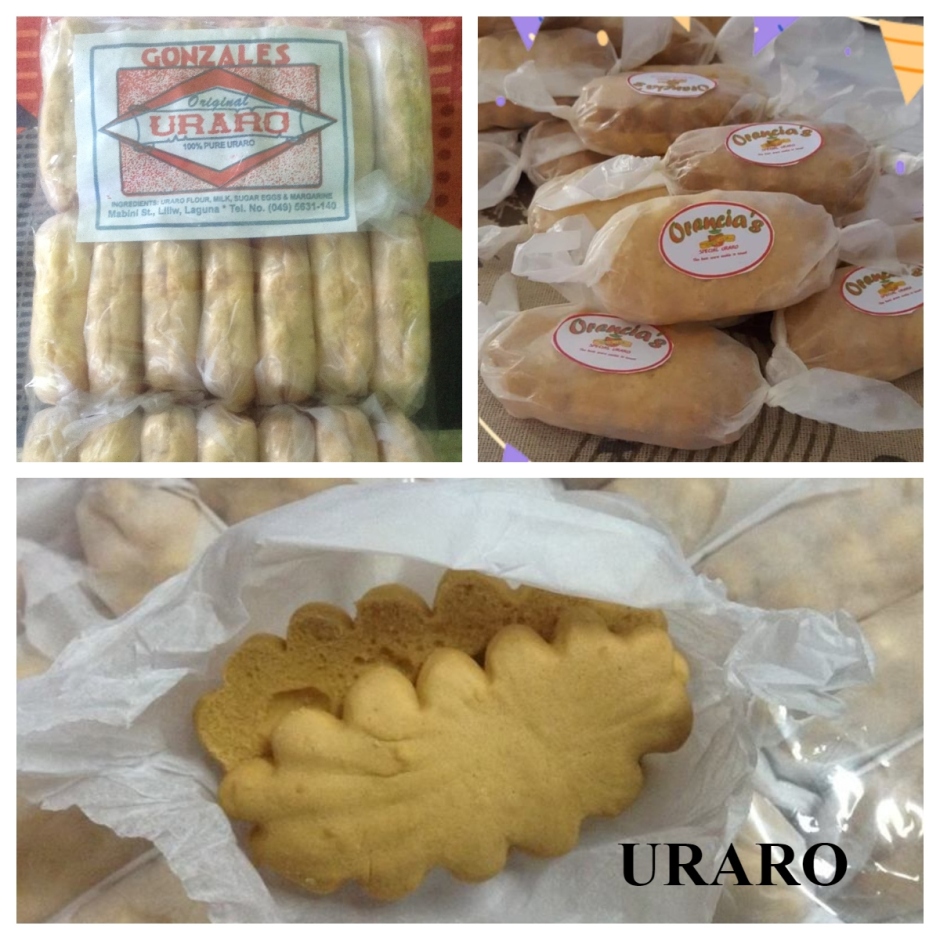
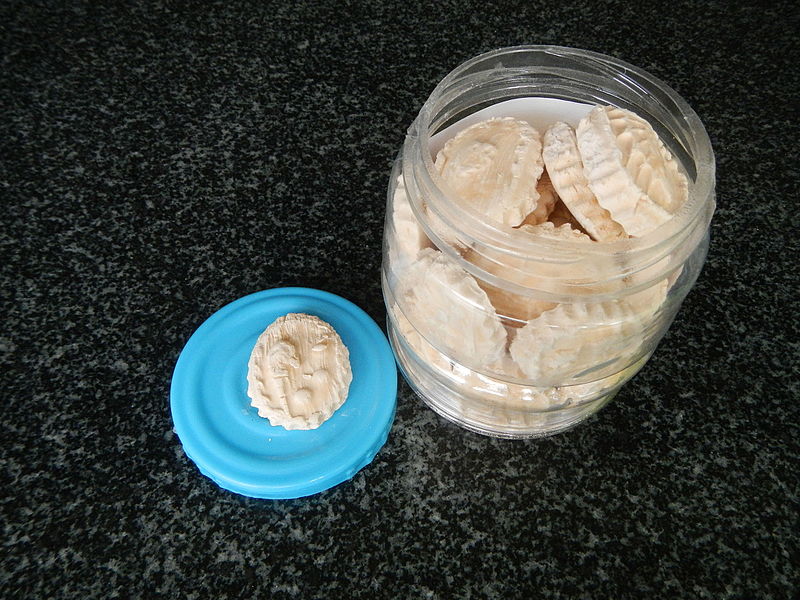
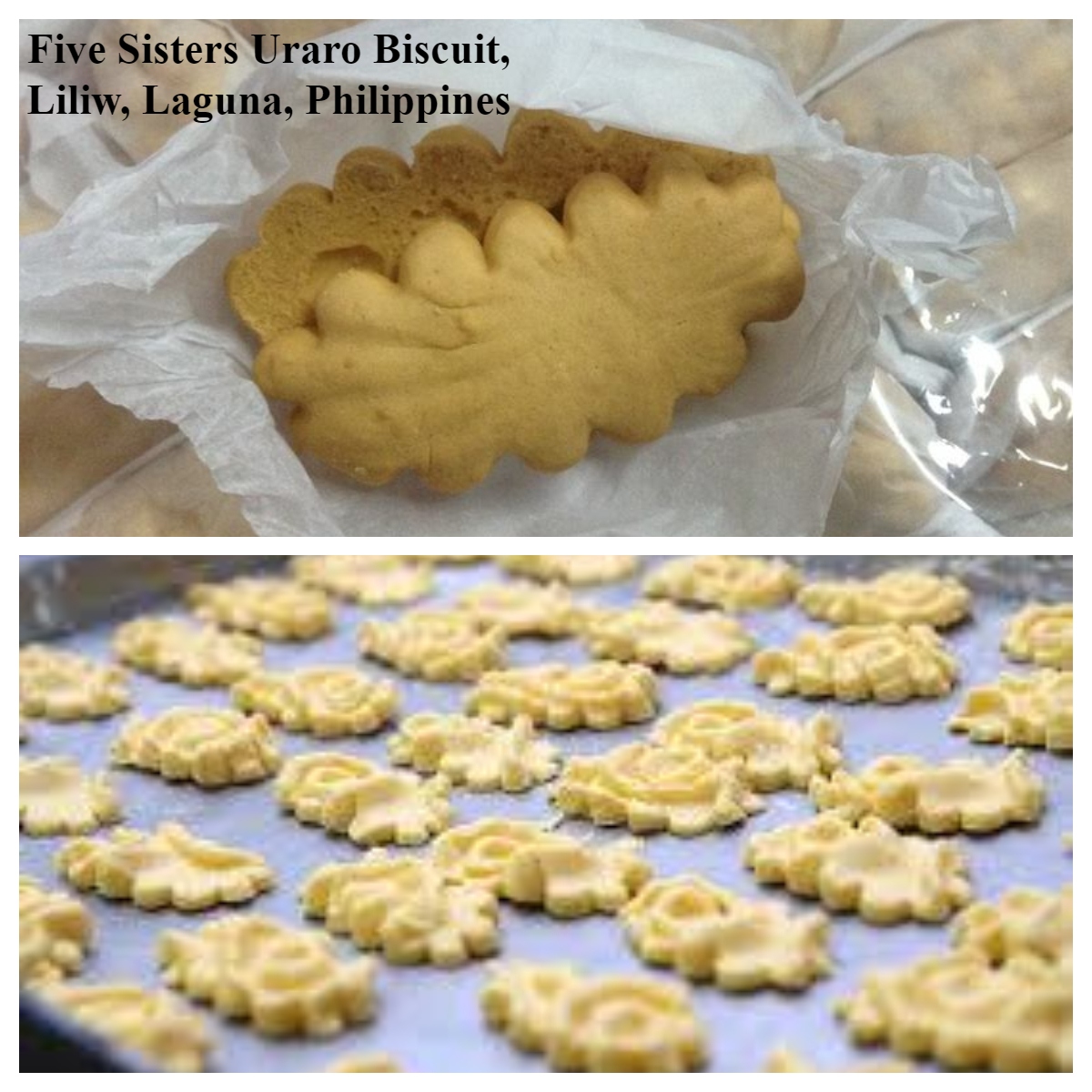
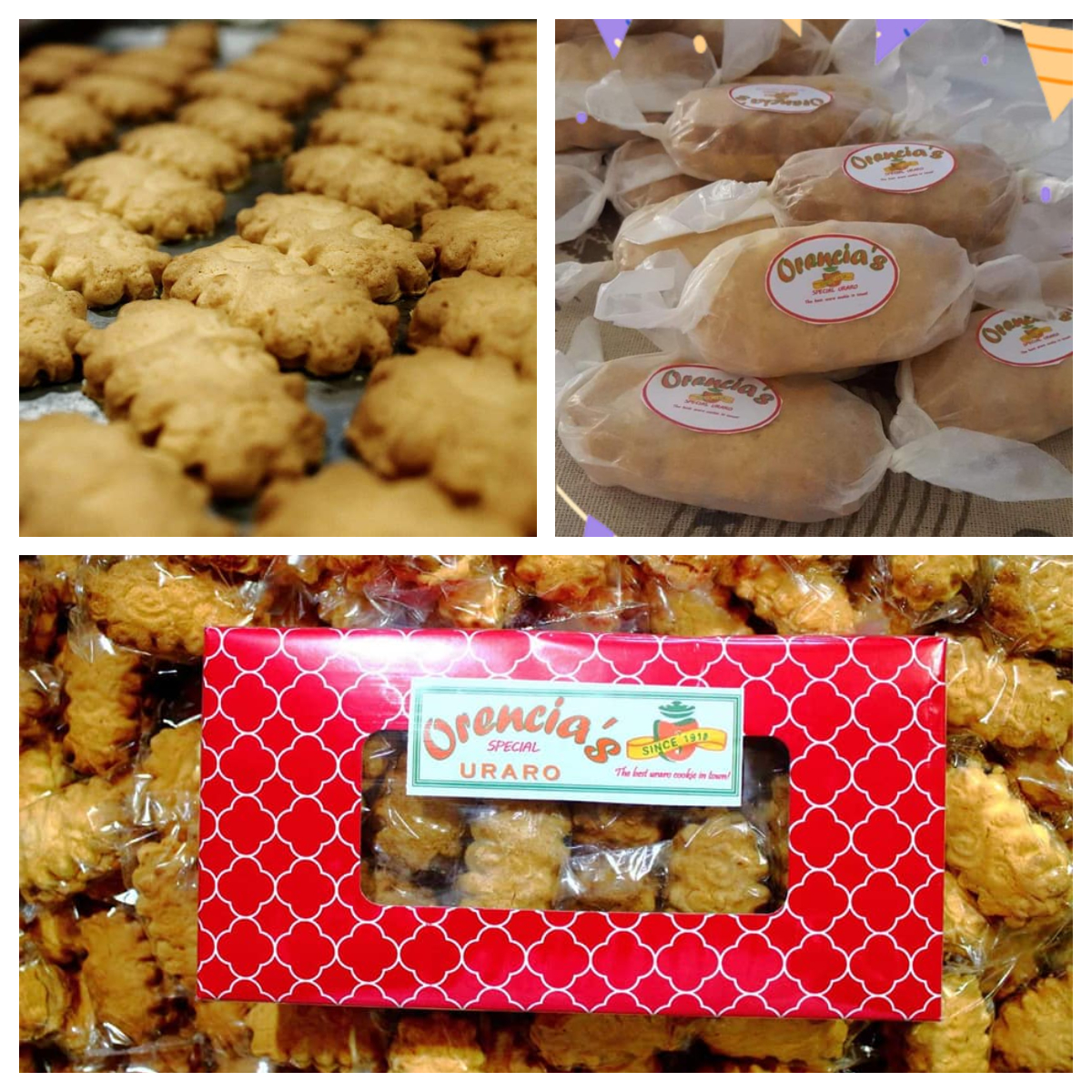
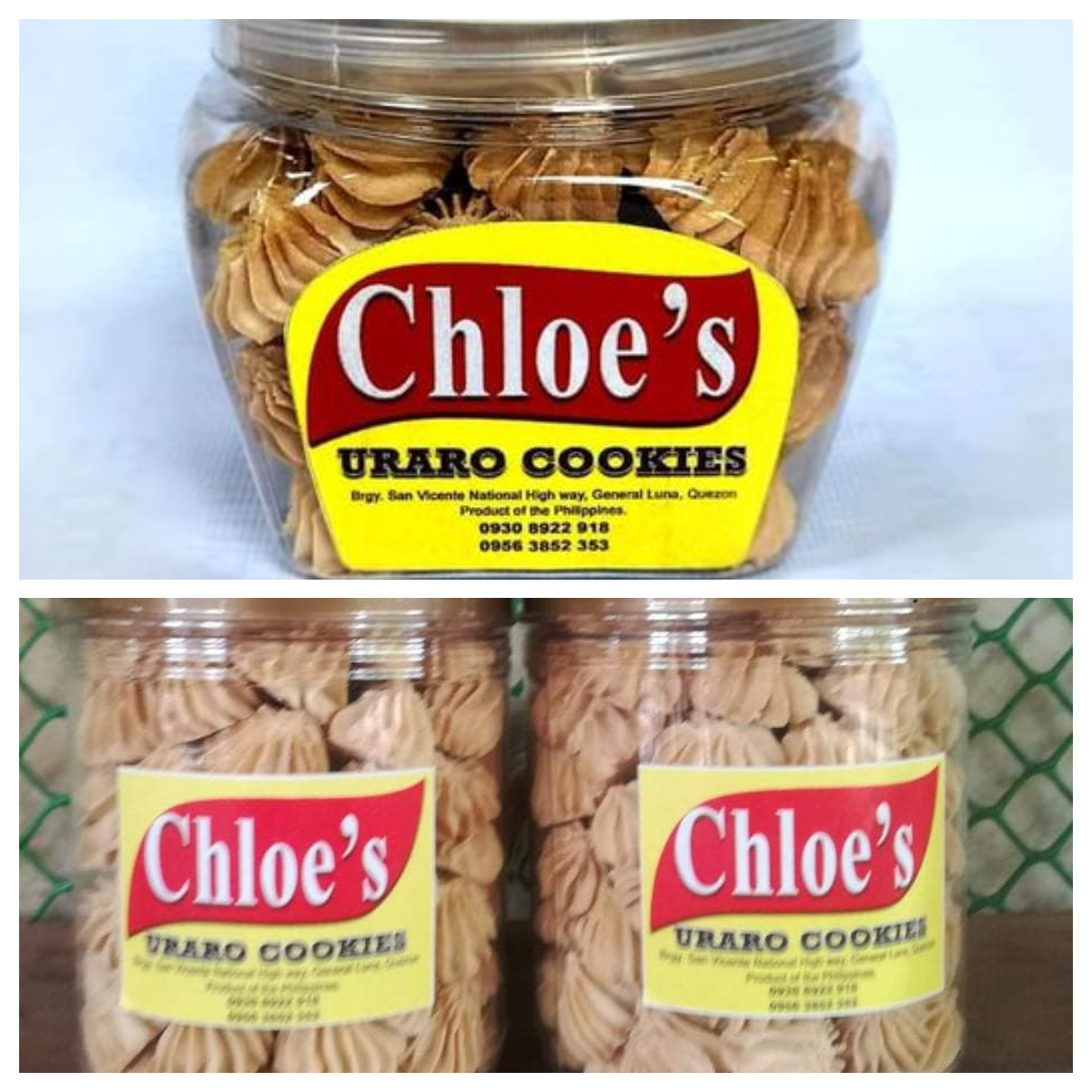
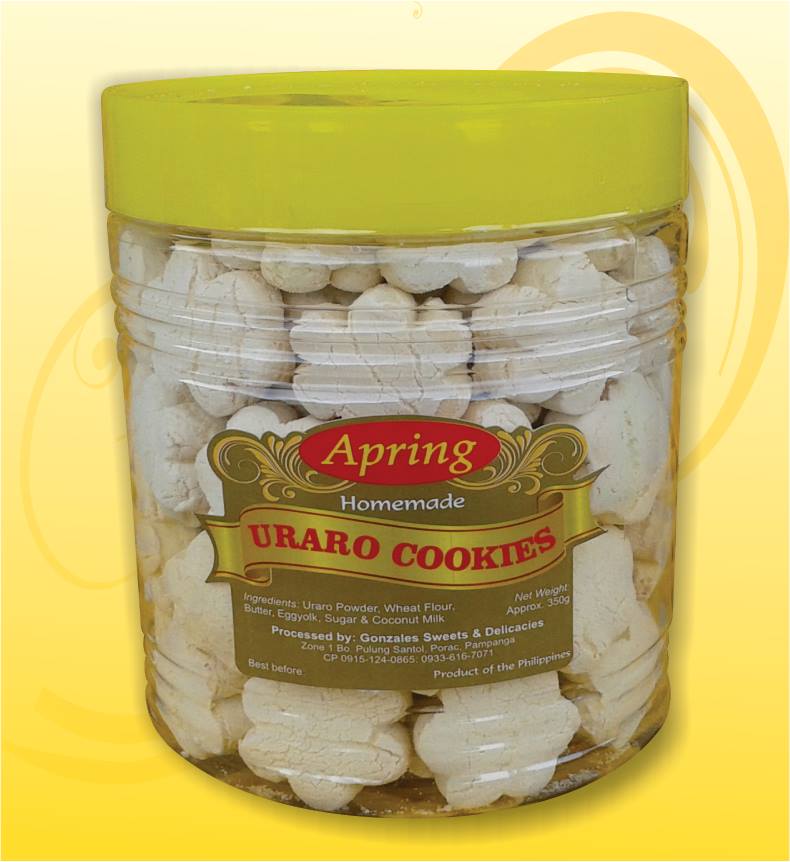
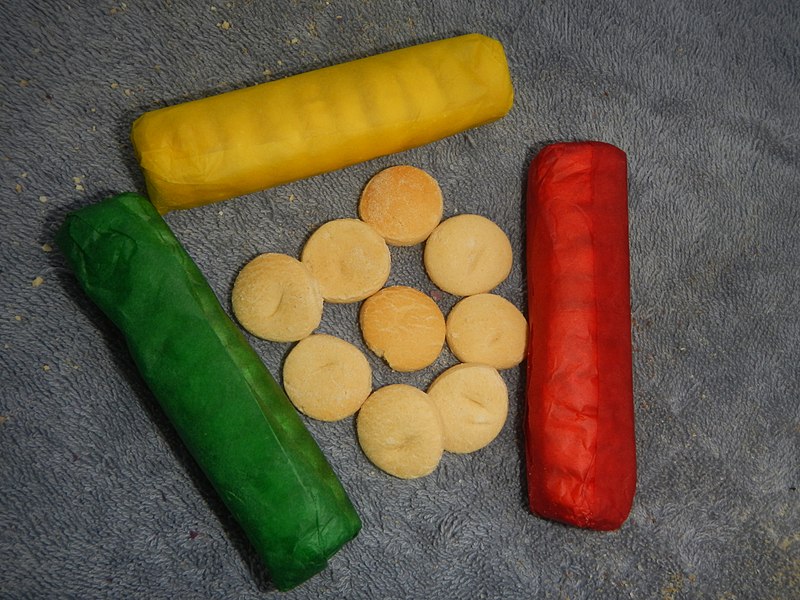
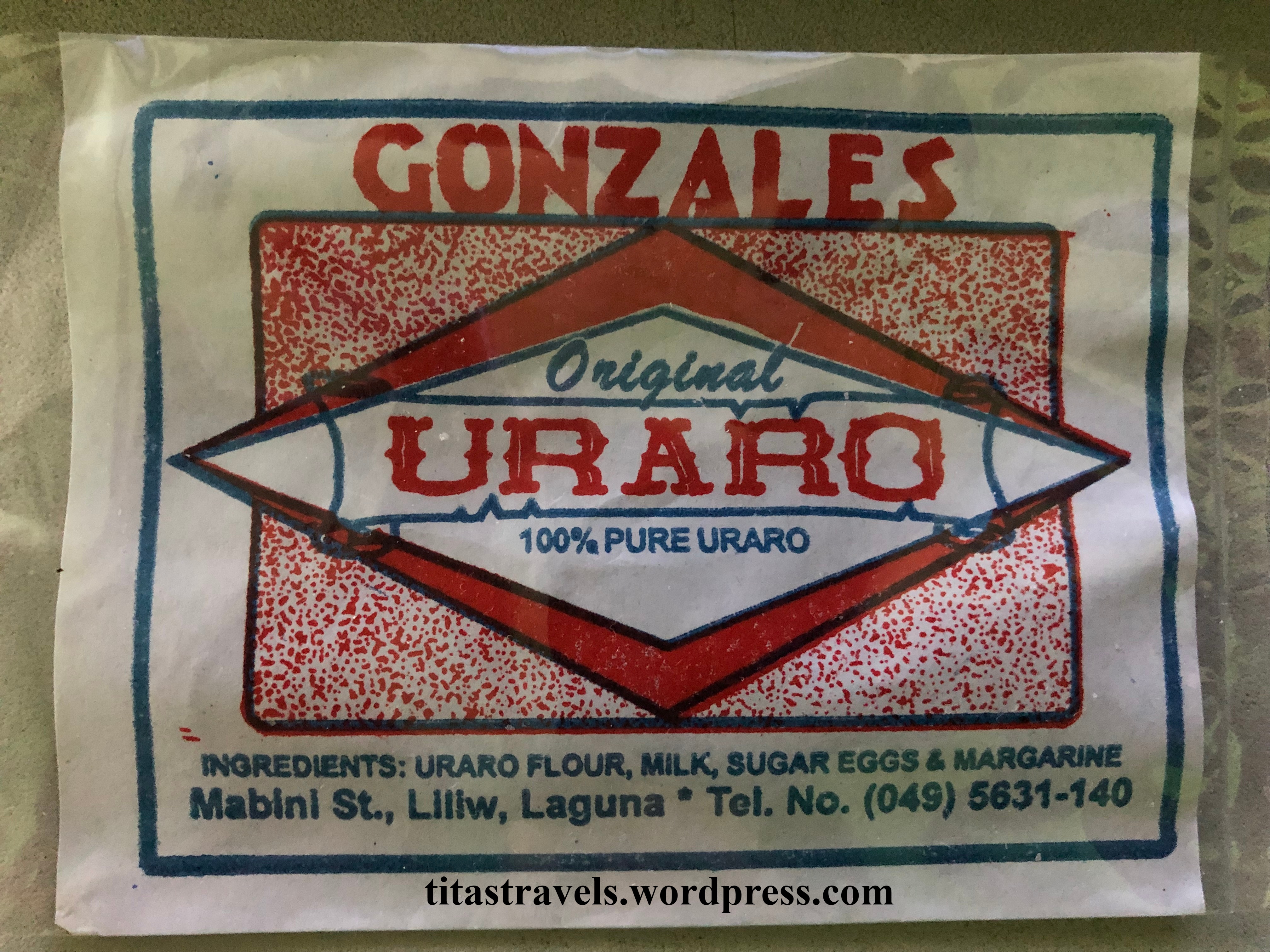

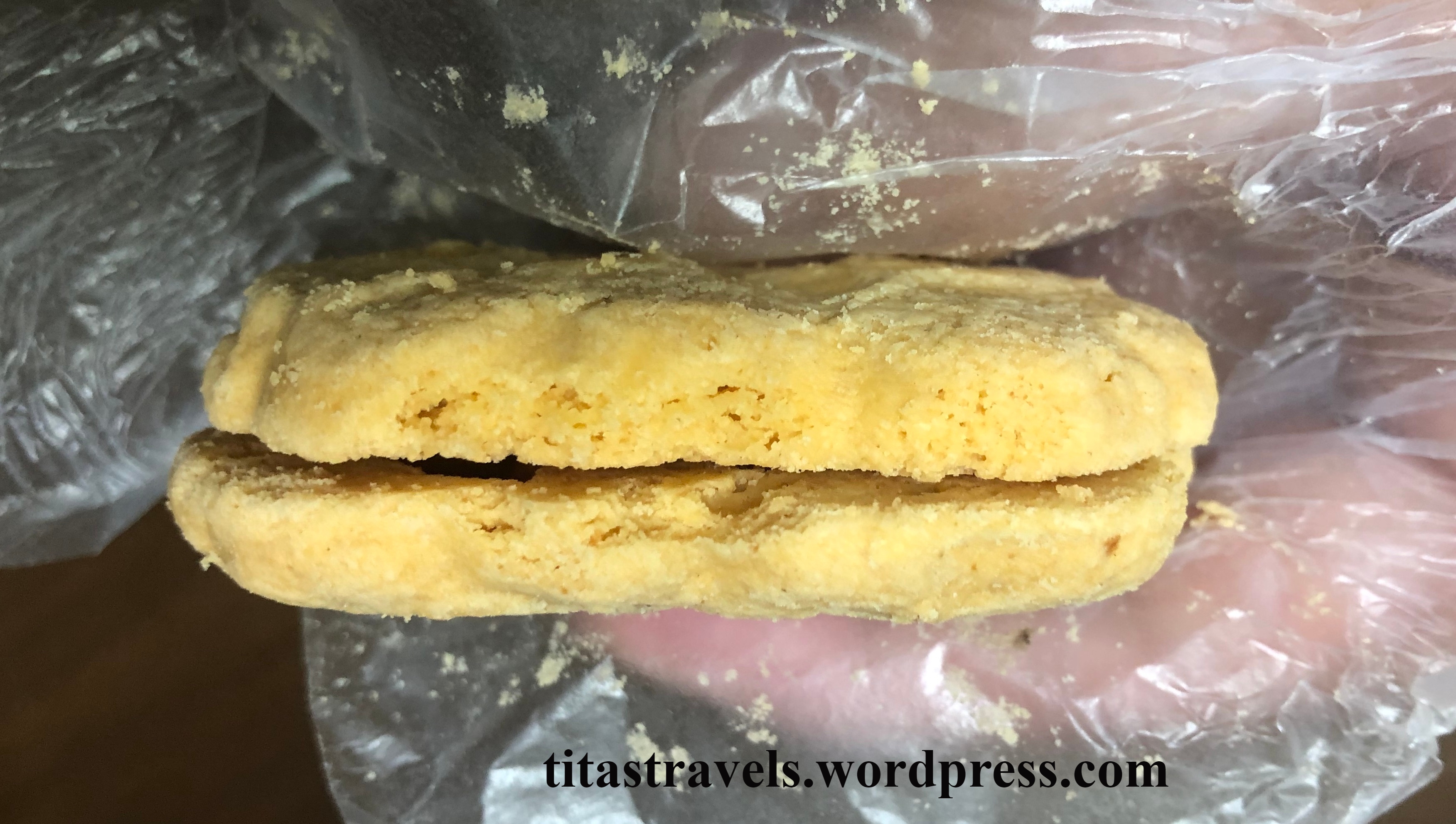

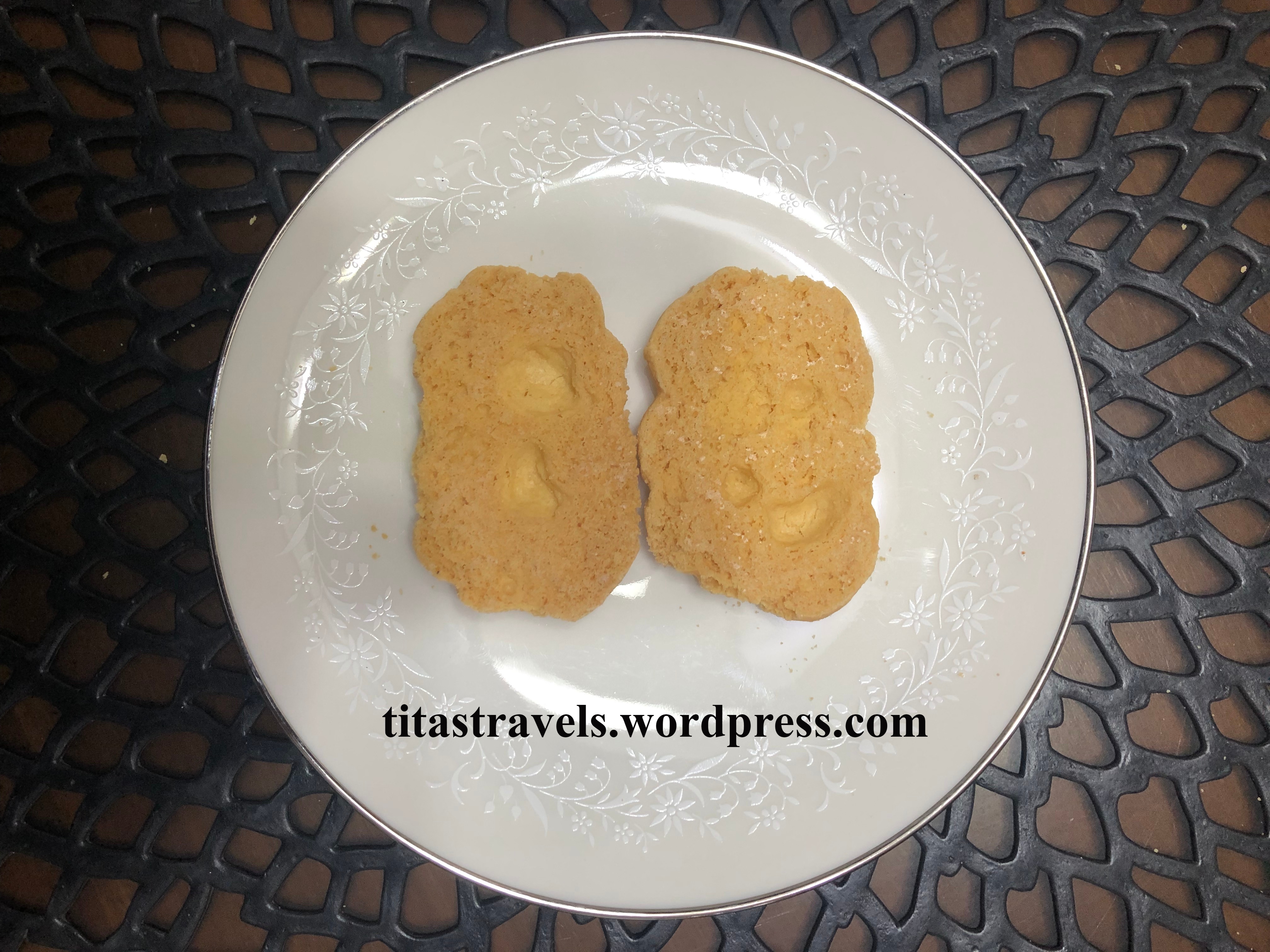
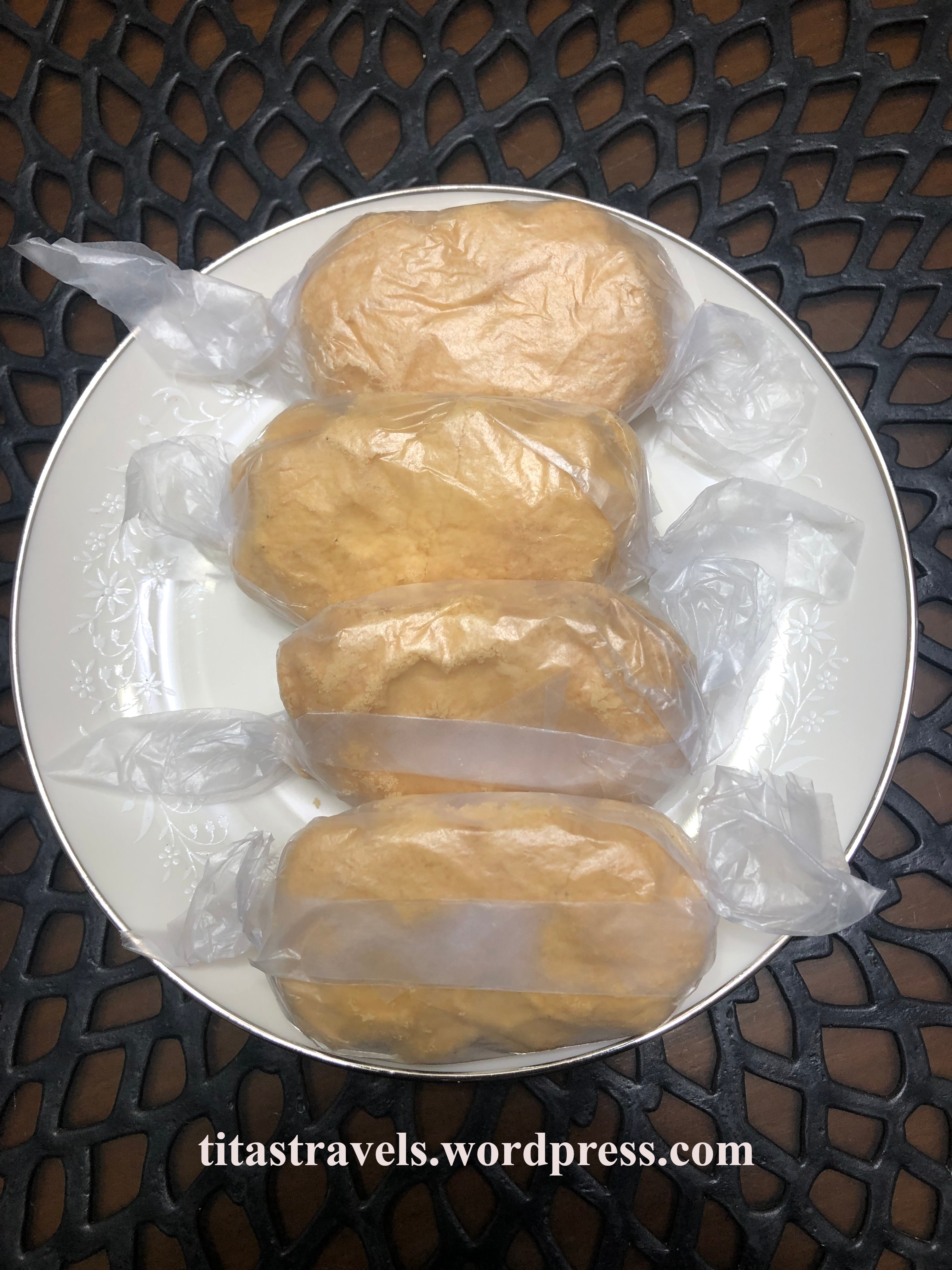
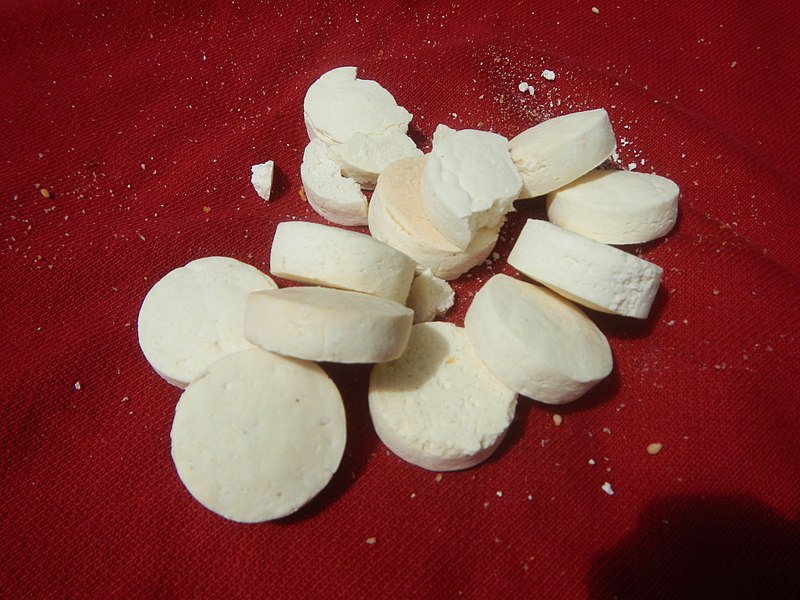
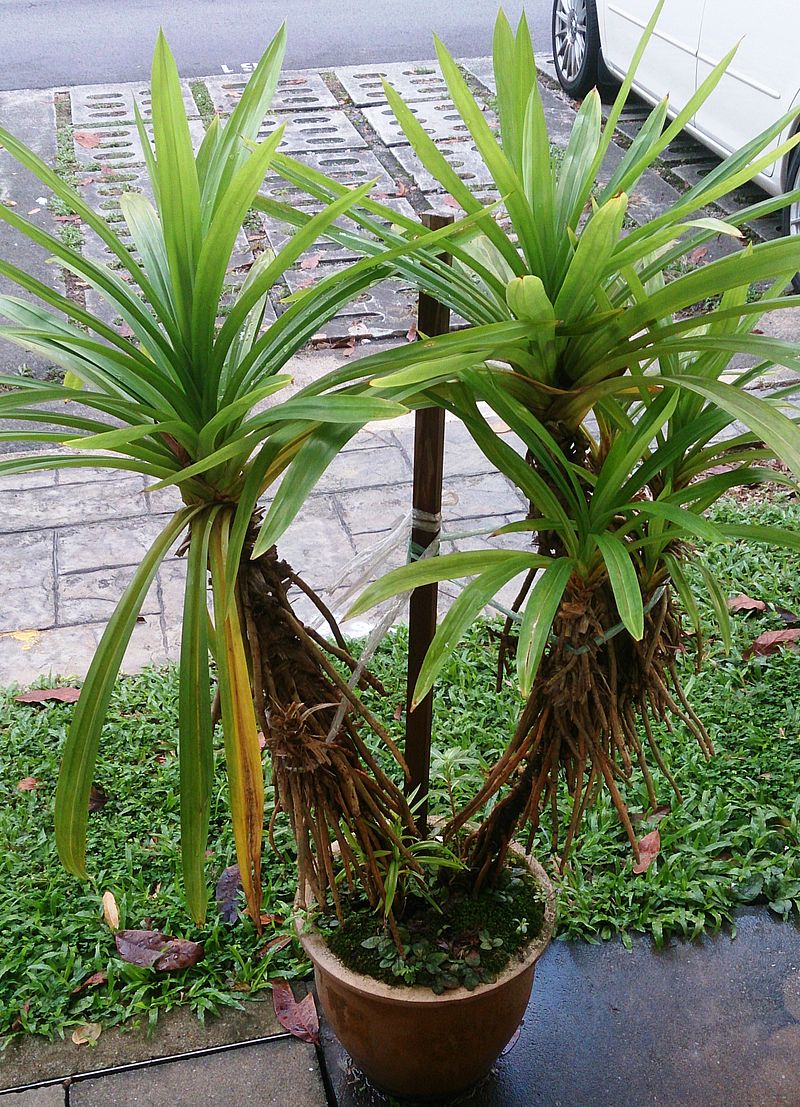
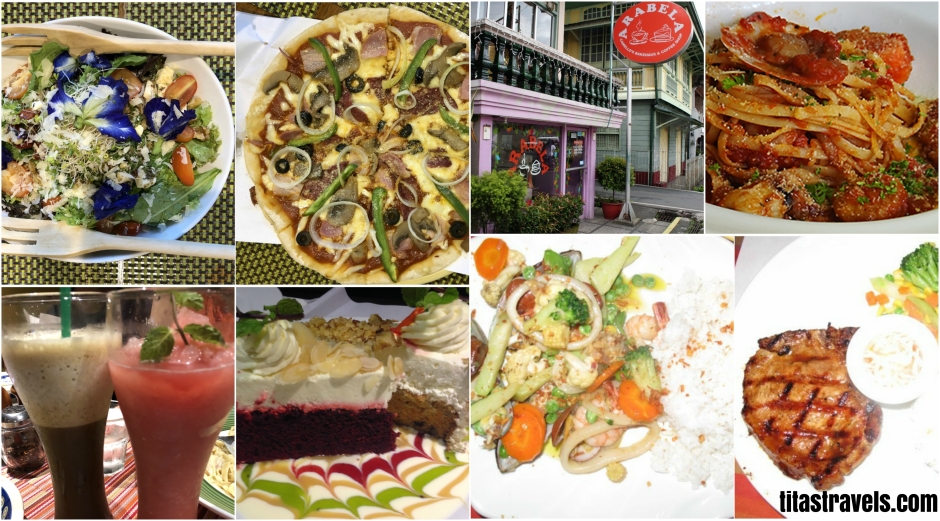
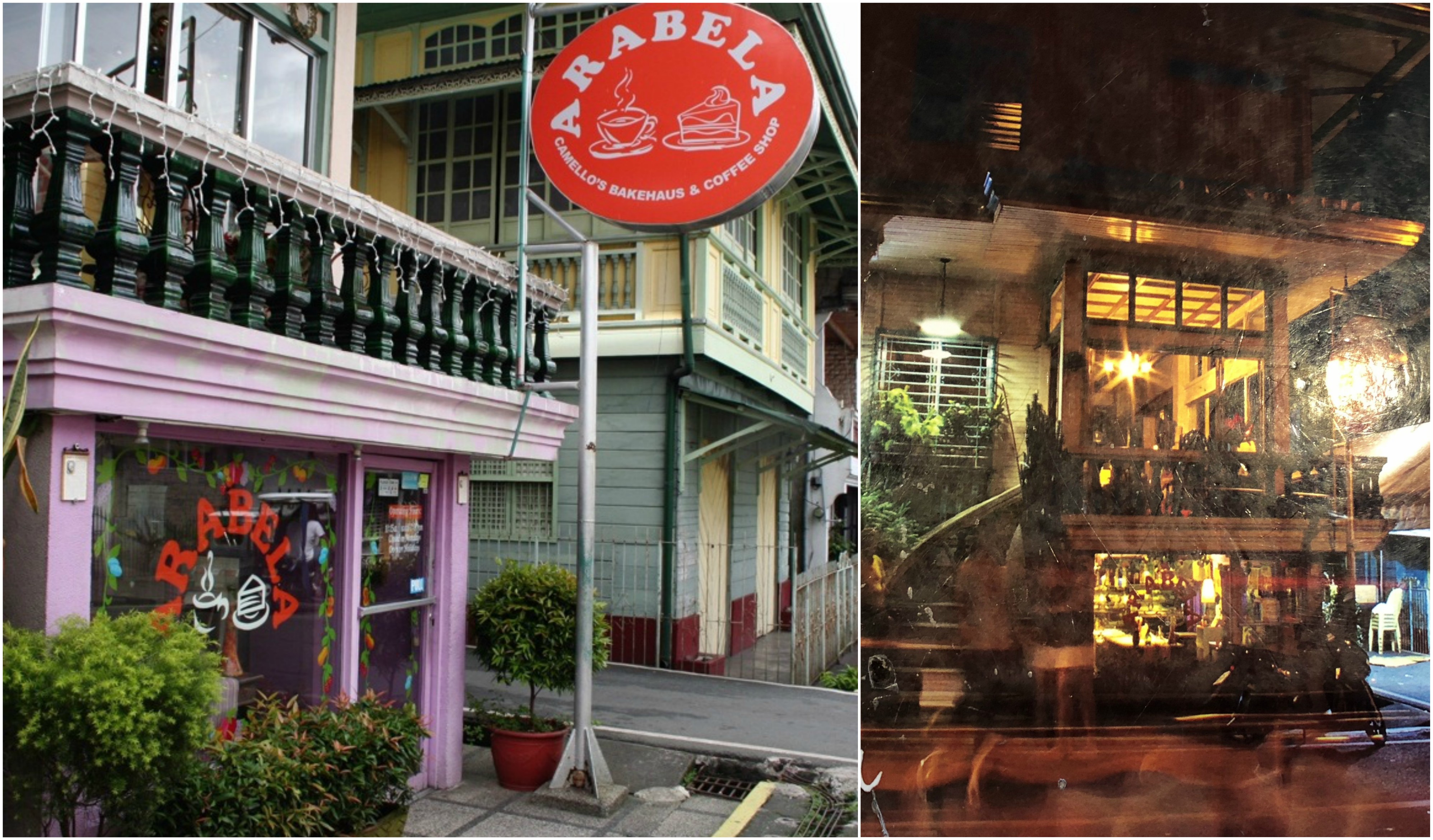 Arabela, 503 Rizal Street, Liliw, Laguna, Philippines
Arabela, 503 Rizal Street, Liliw, Laguna, Philippines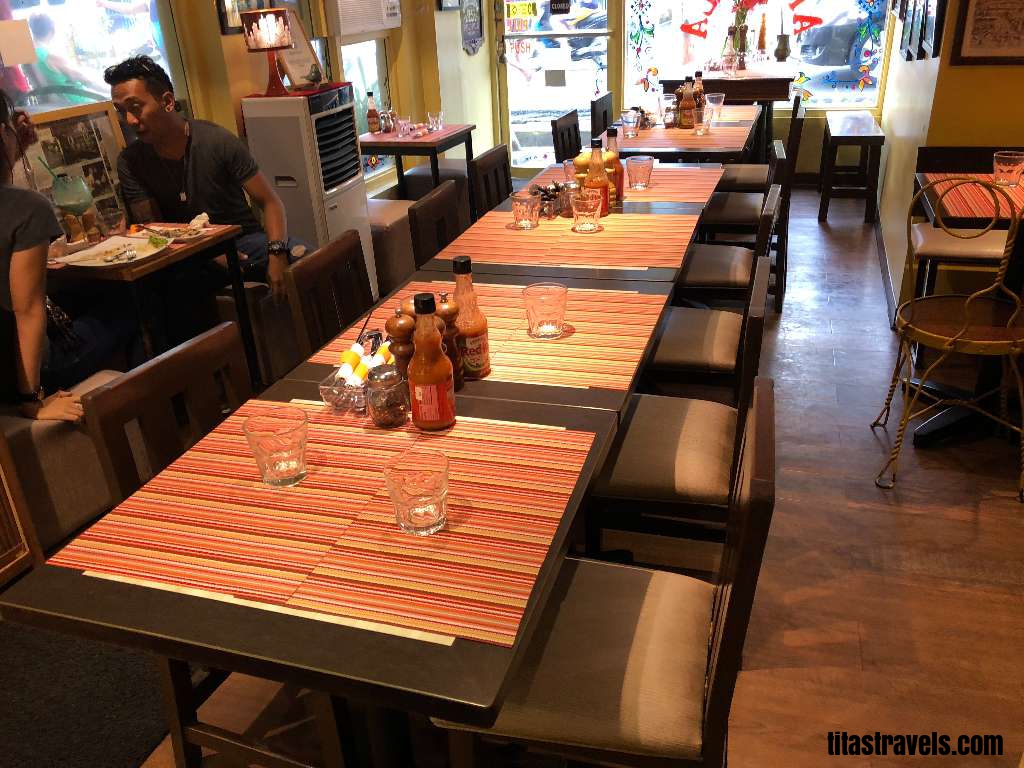


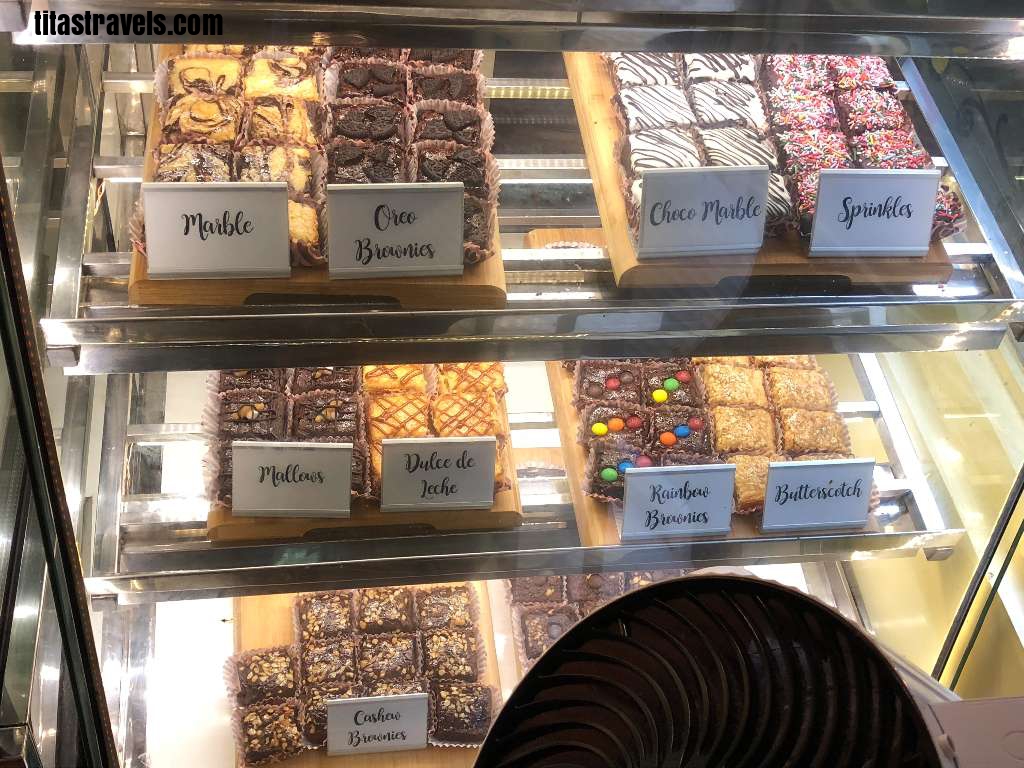
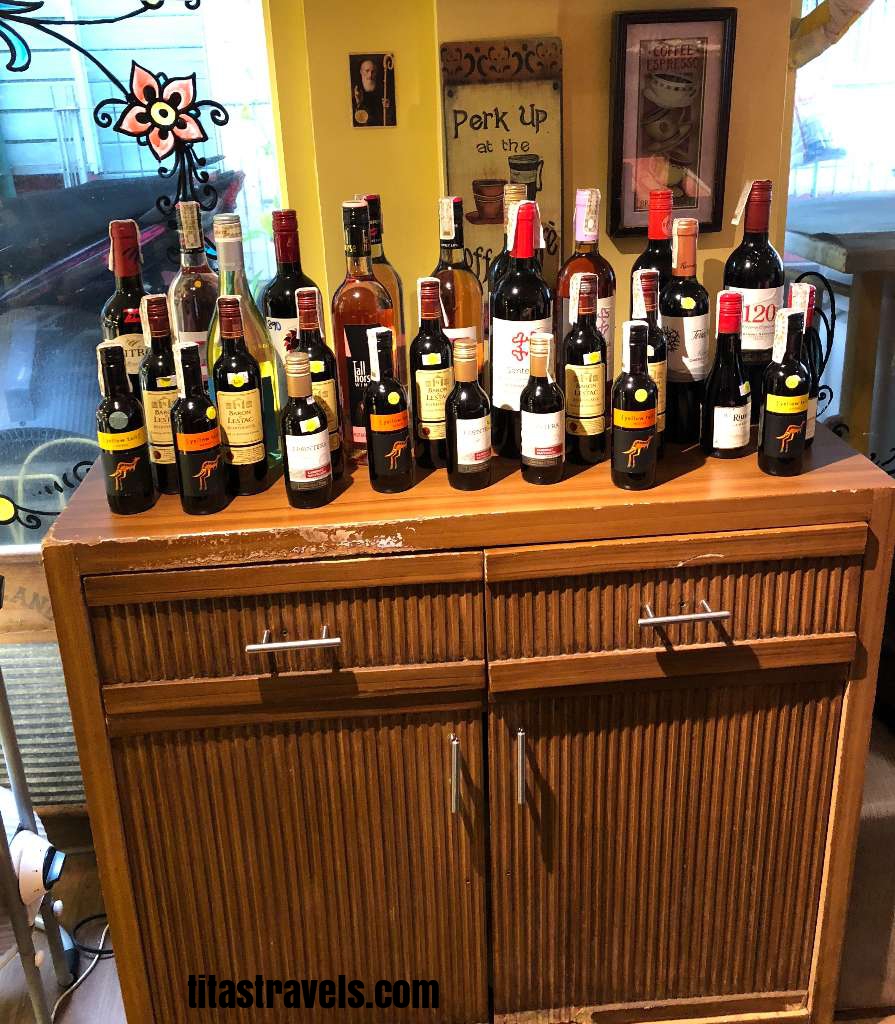

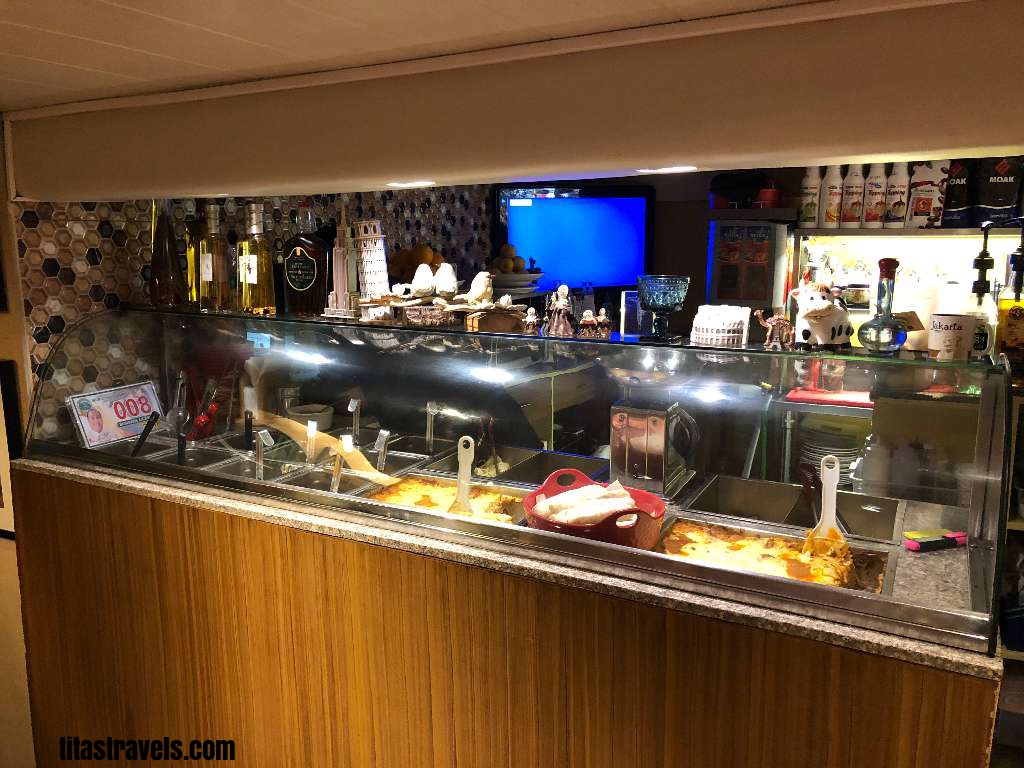
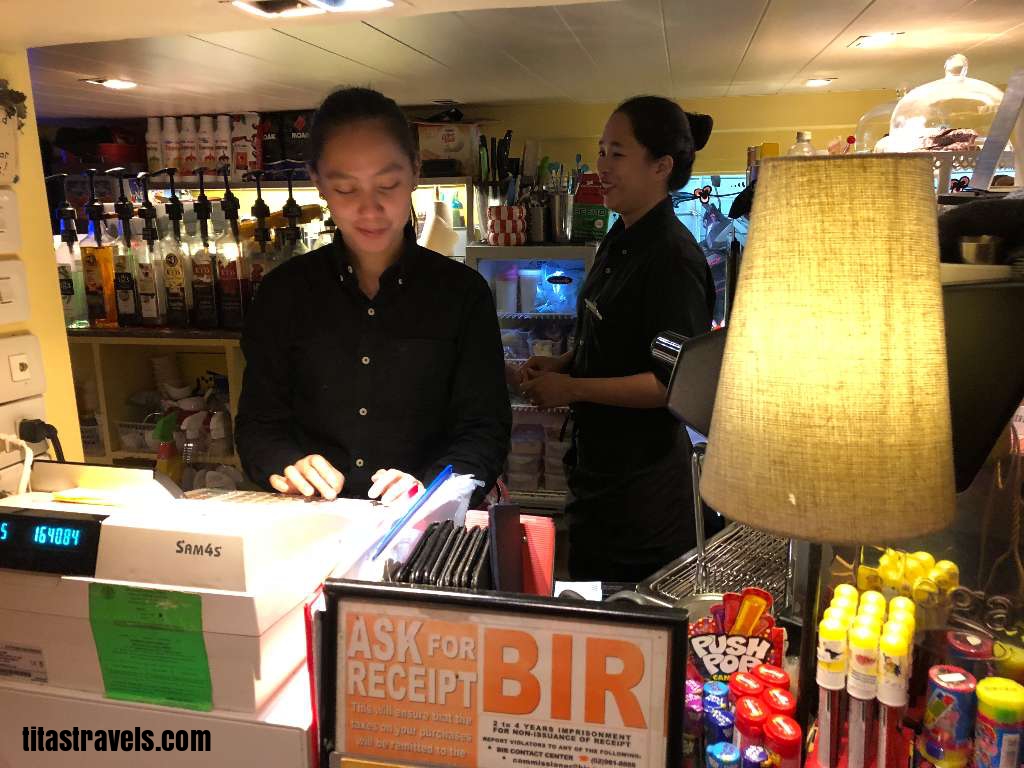
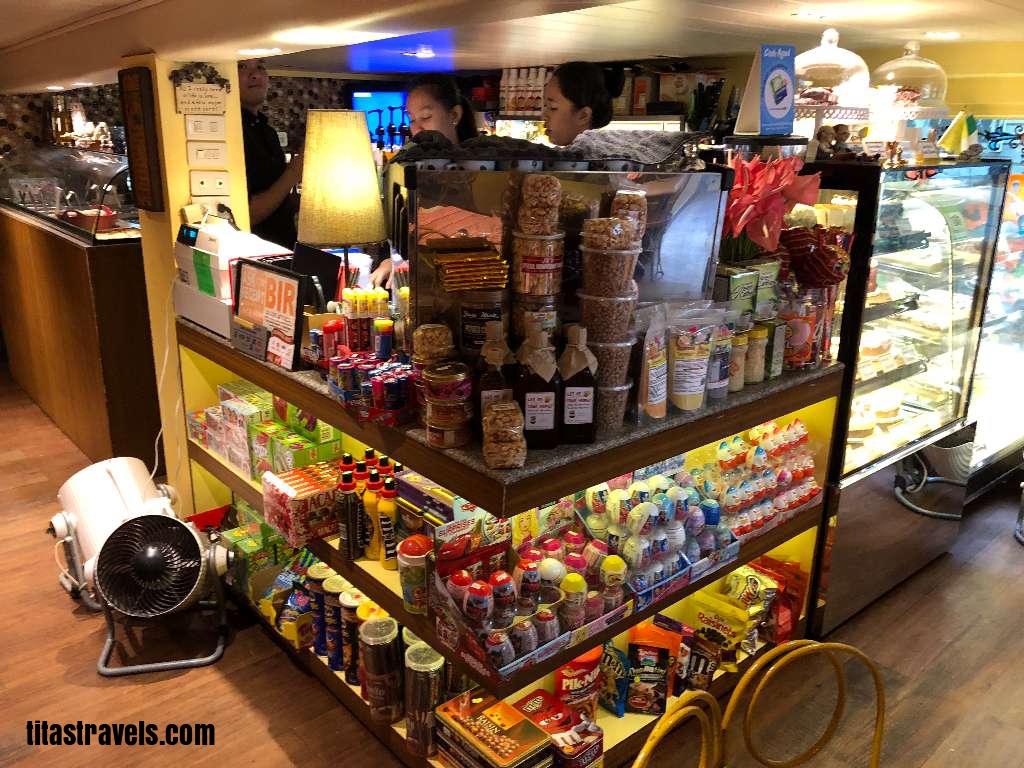
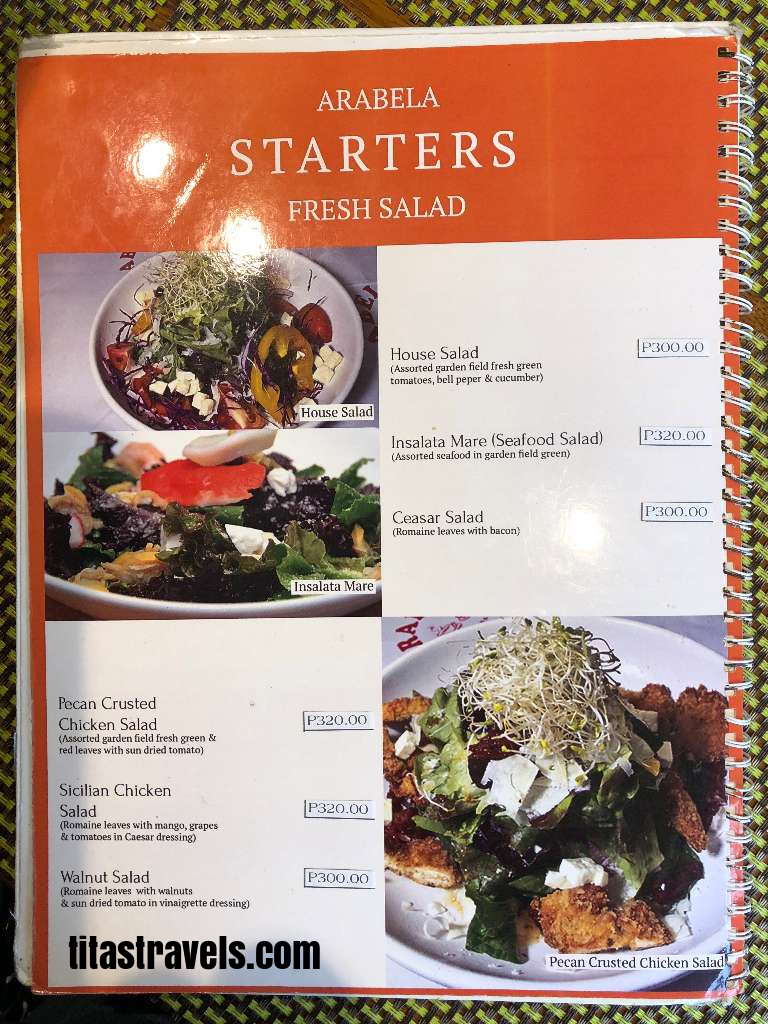
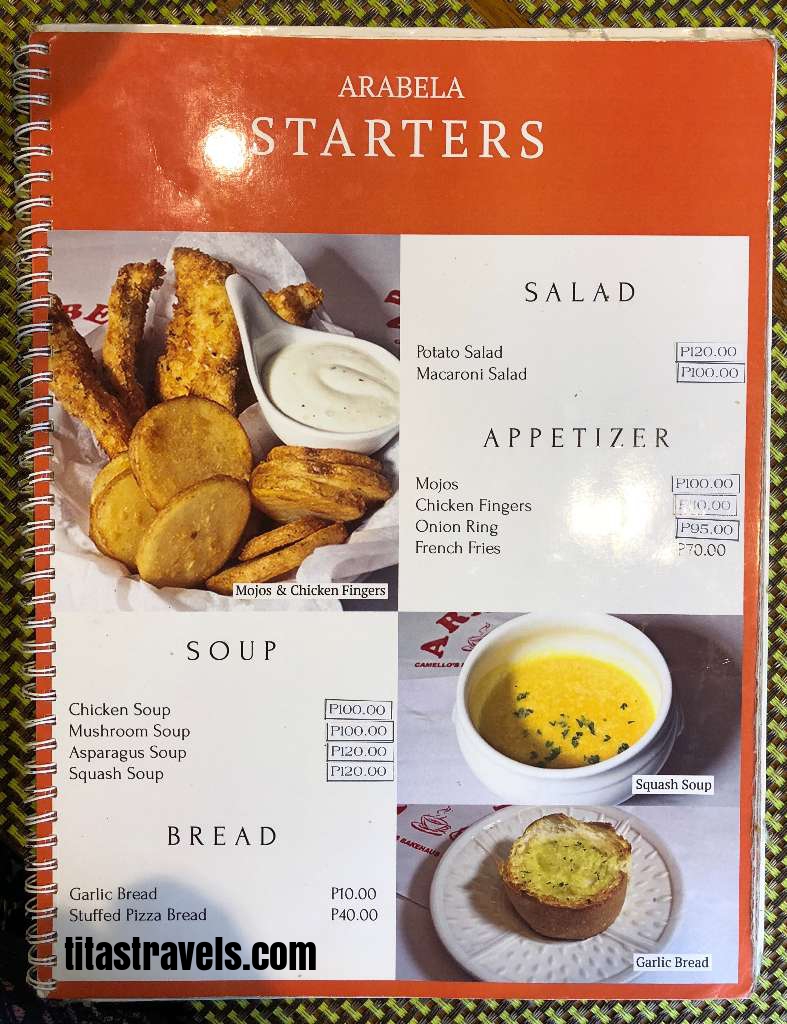

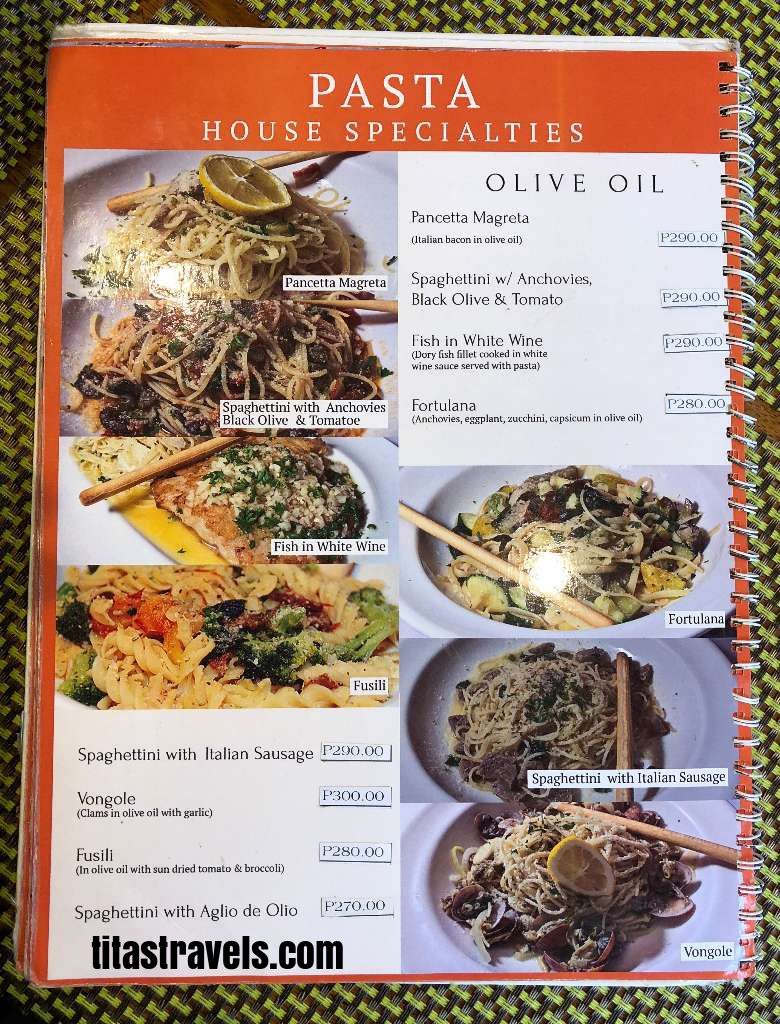
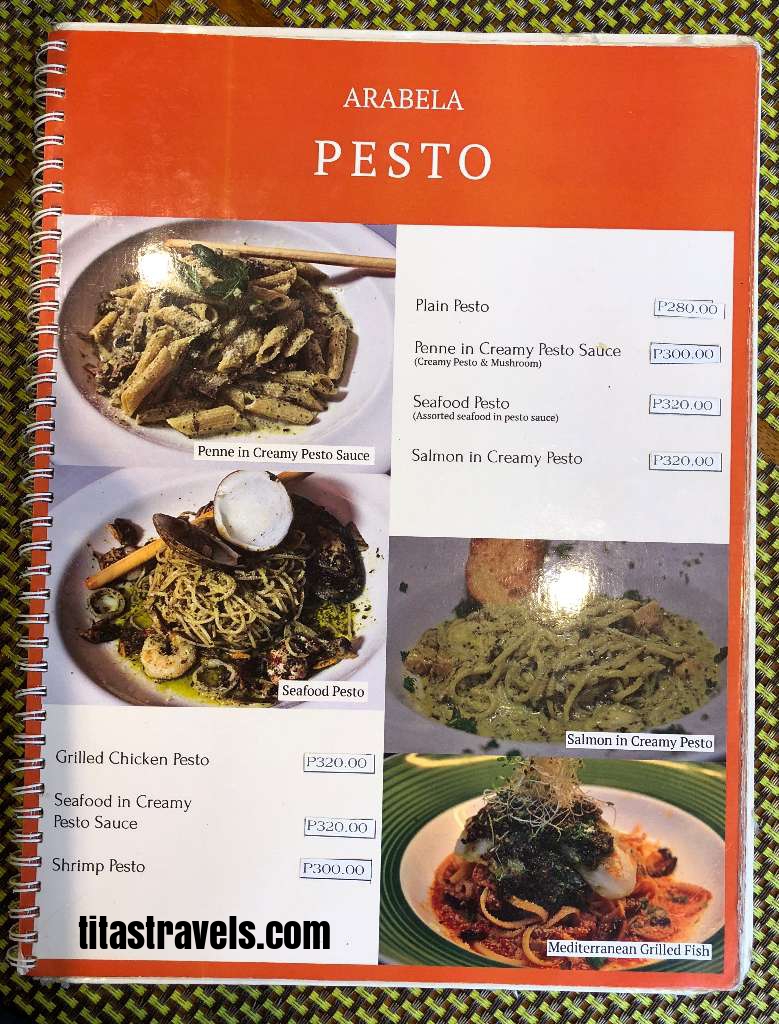
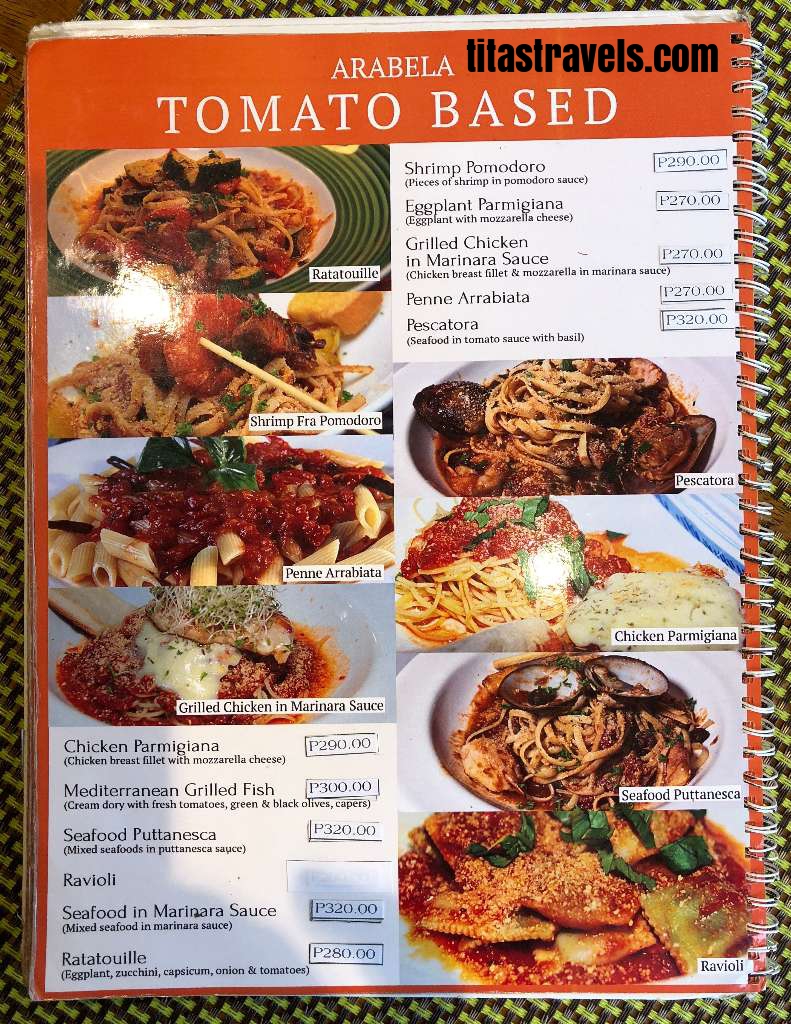
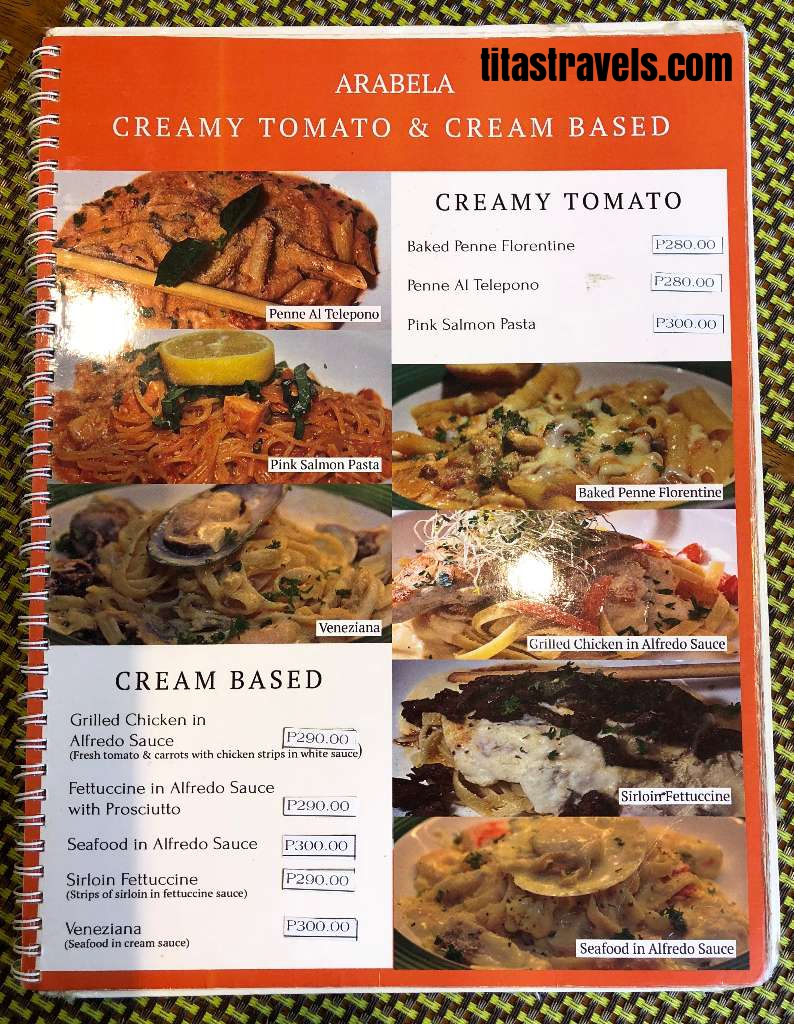
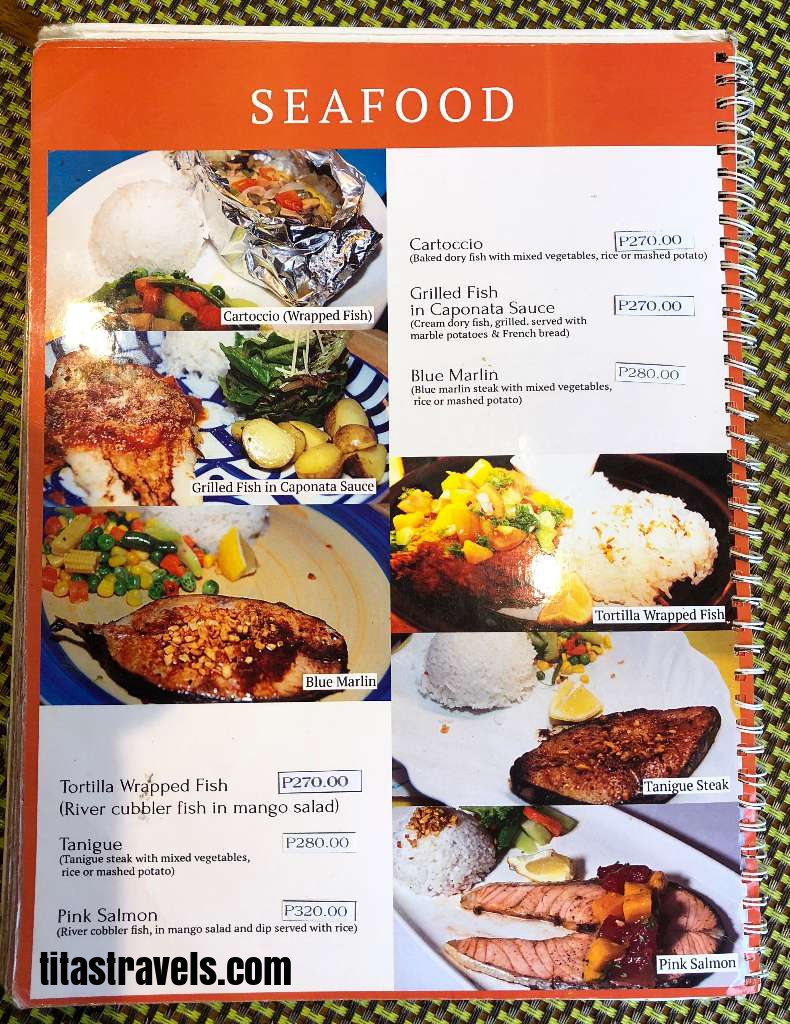
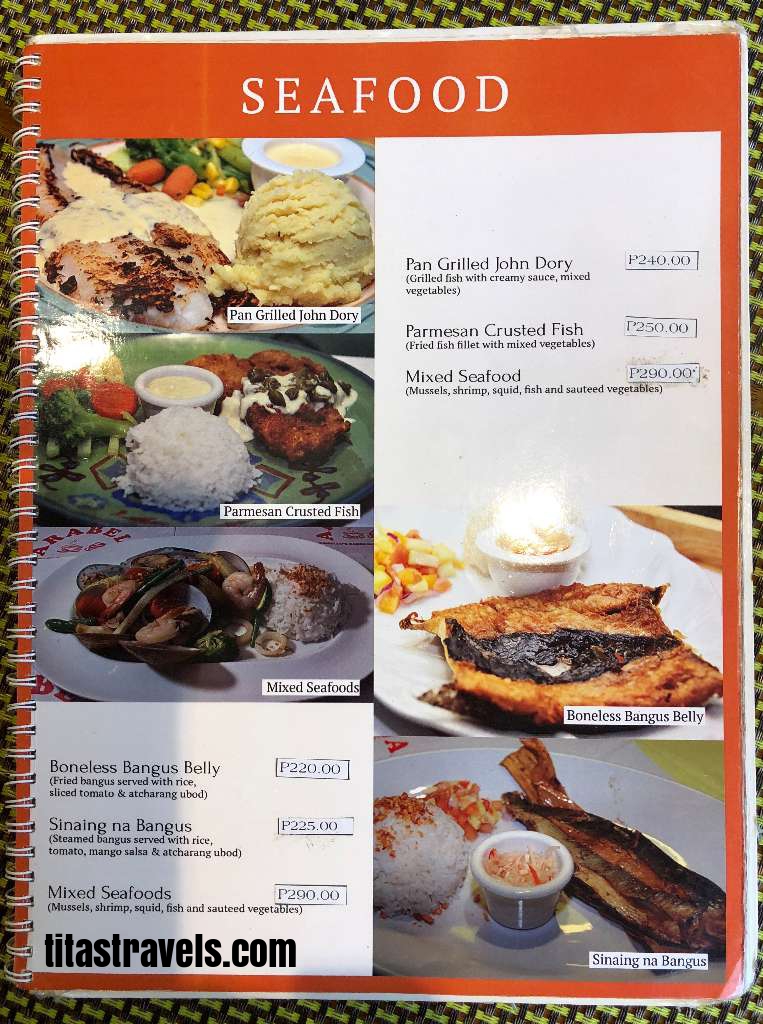
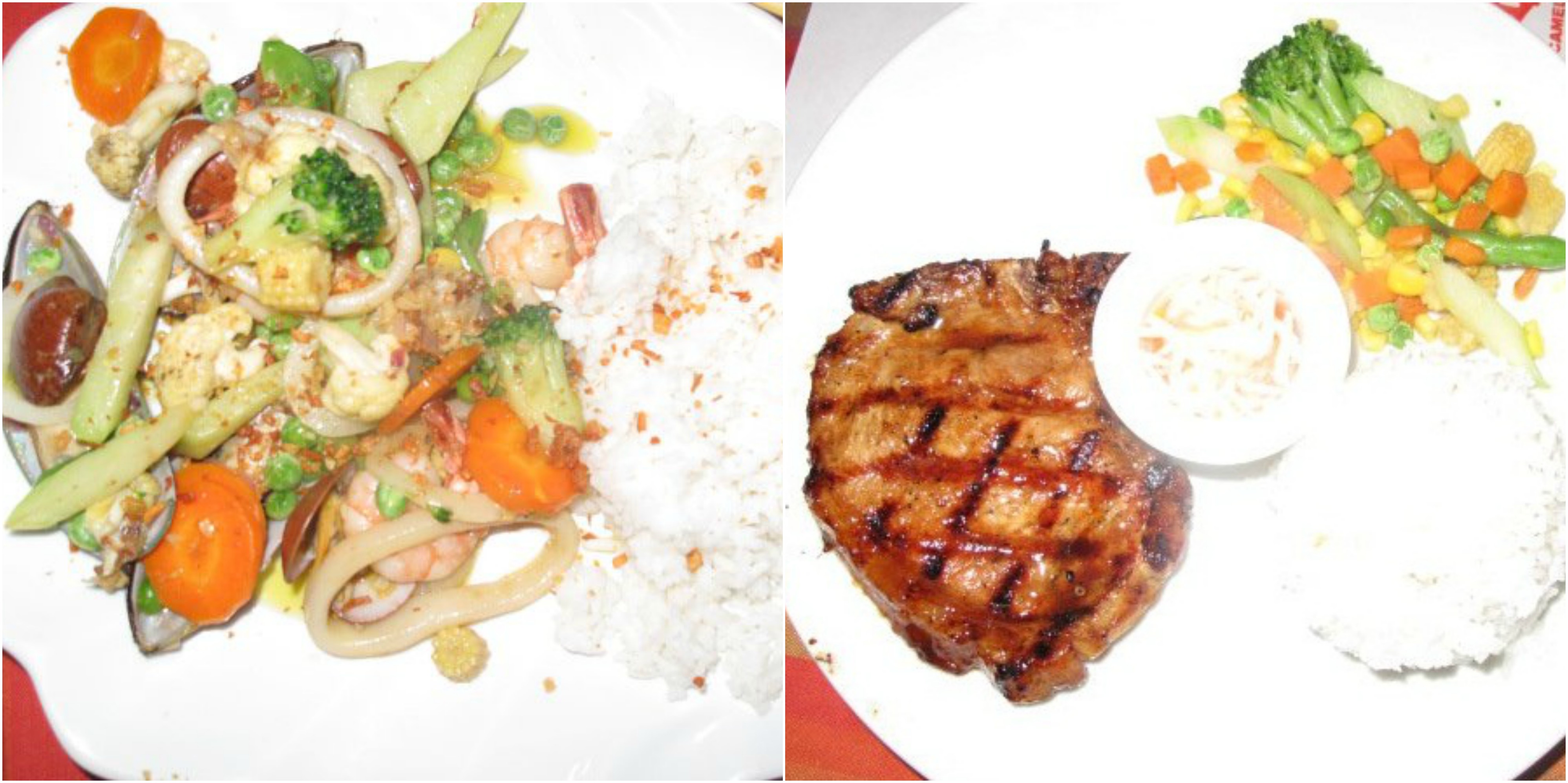
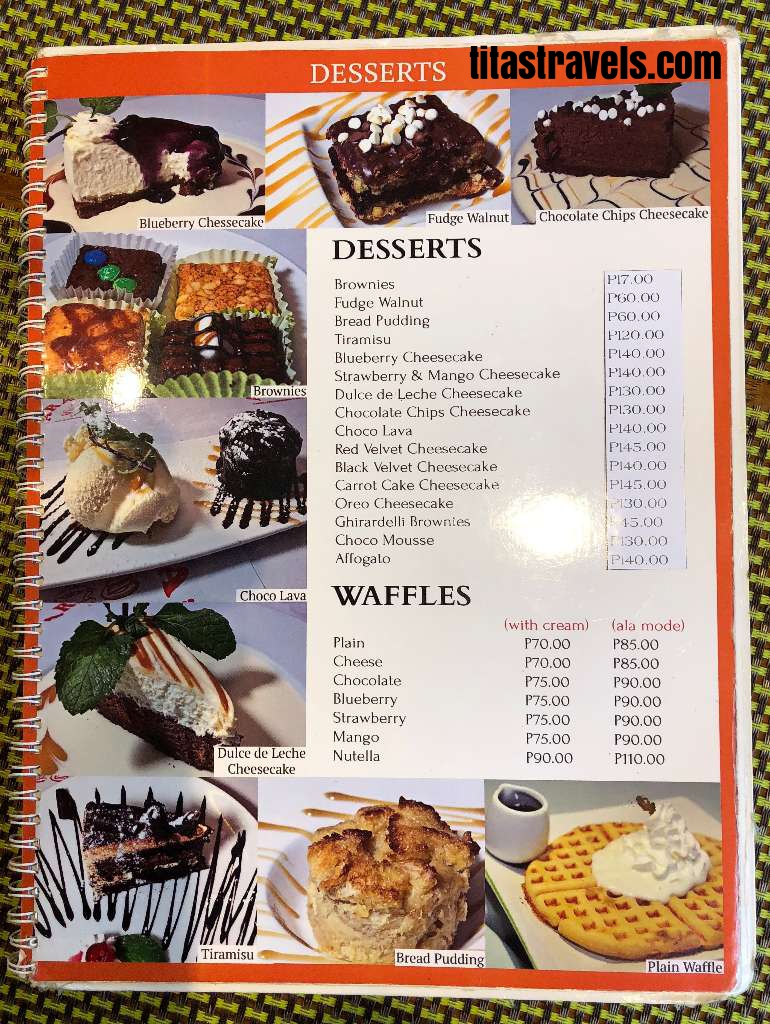
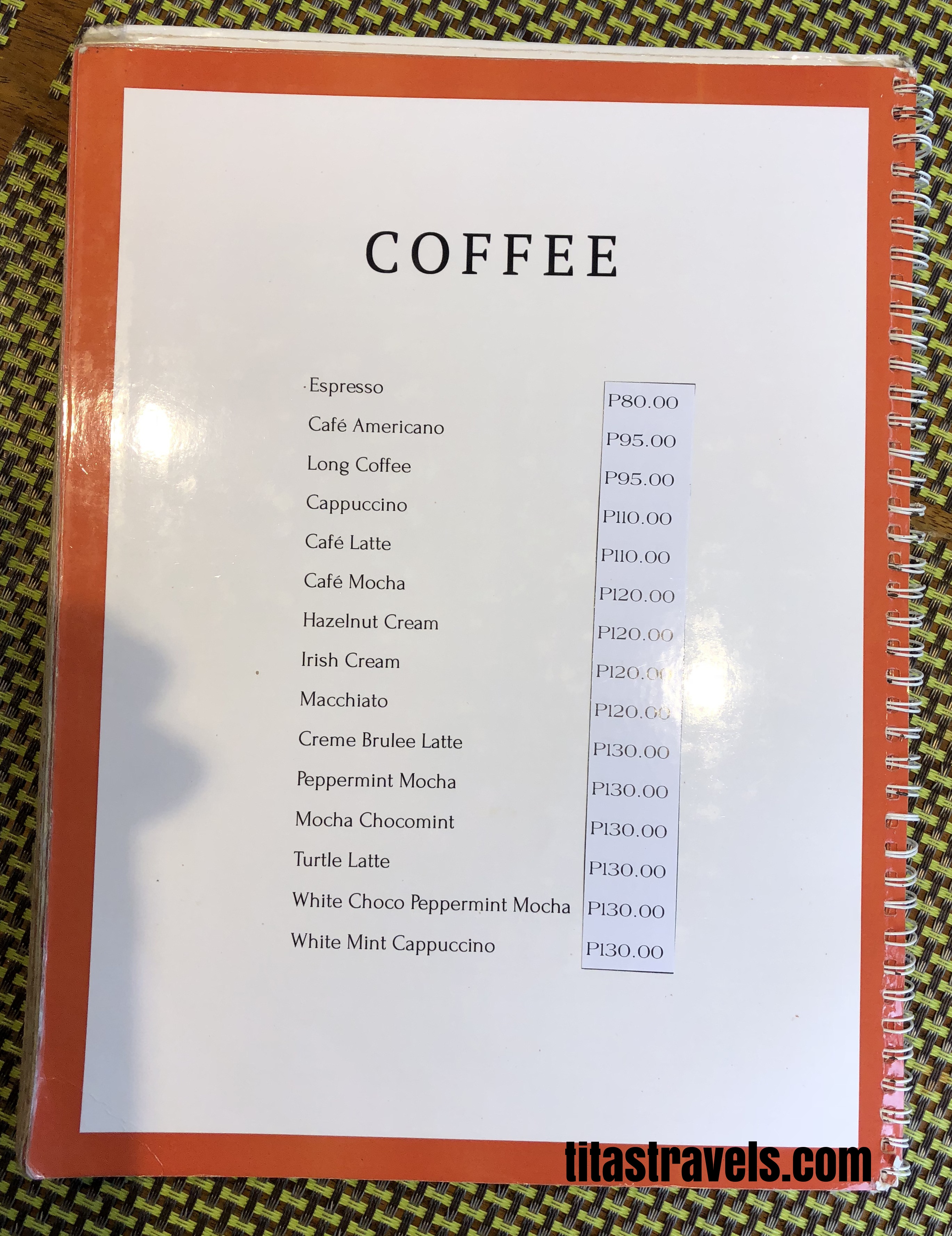

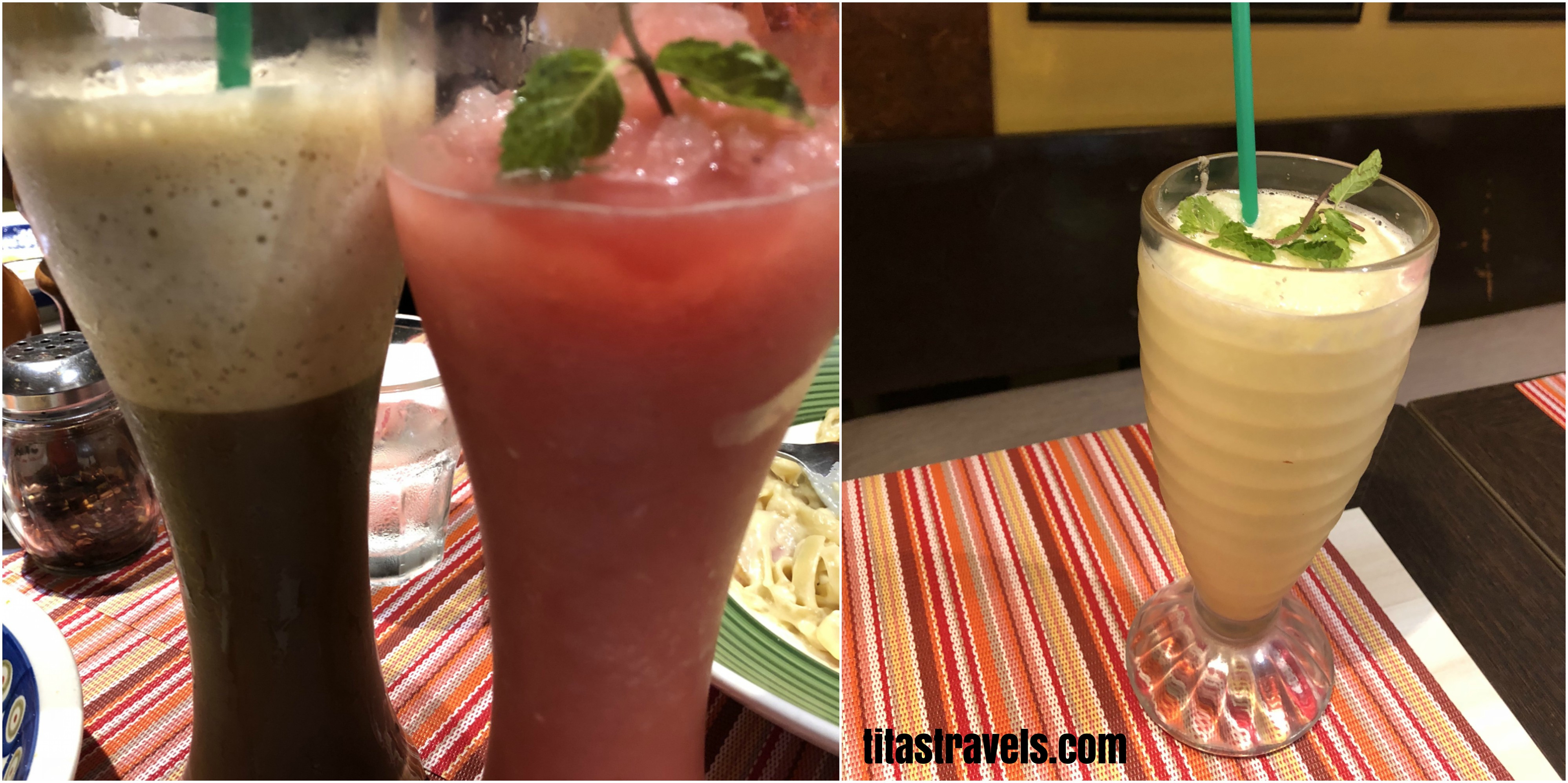
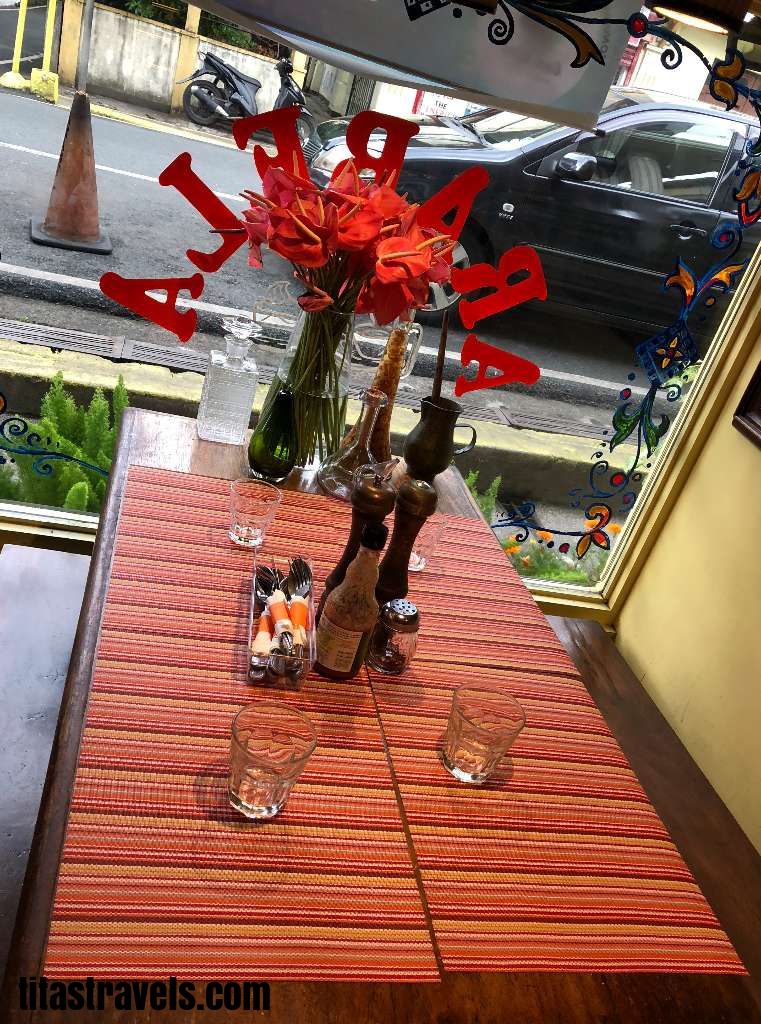
 Walnut Salad, yum!
Walnut Salad, yum!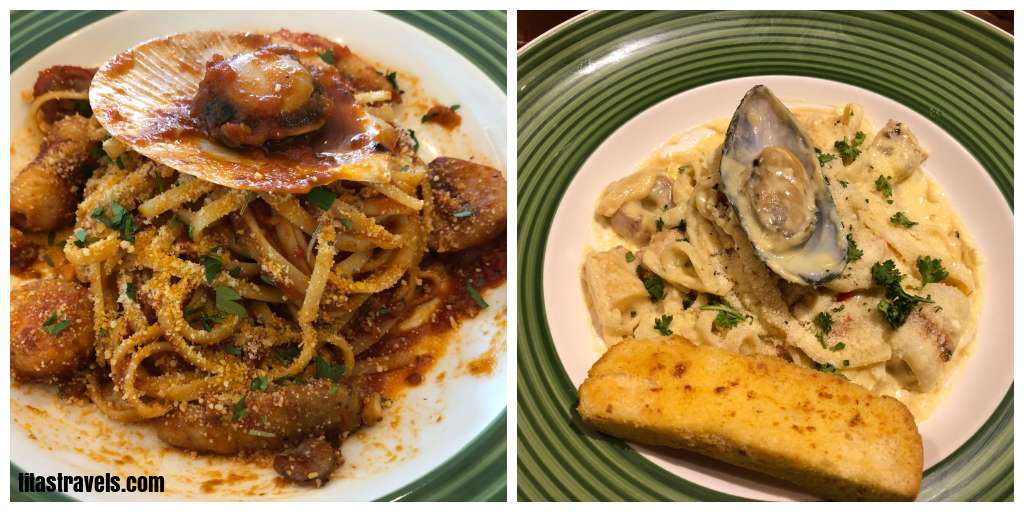 Seafood pasta, whether in Putanesca or Alfredo Sauce, makes my tummy happy!
Seafood pasta, whether in Putanesca or Alfredo Sauce, makes my tummy happy!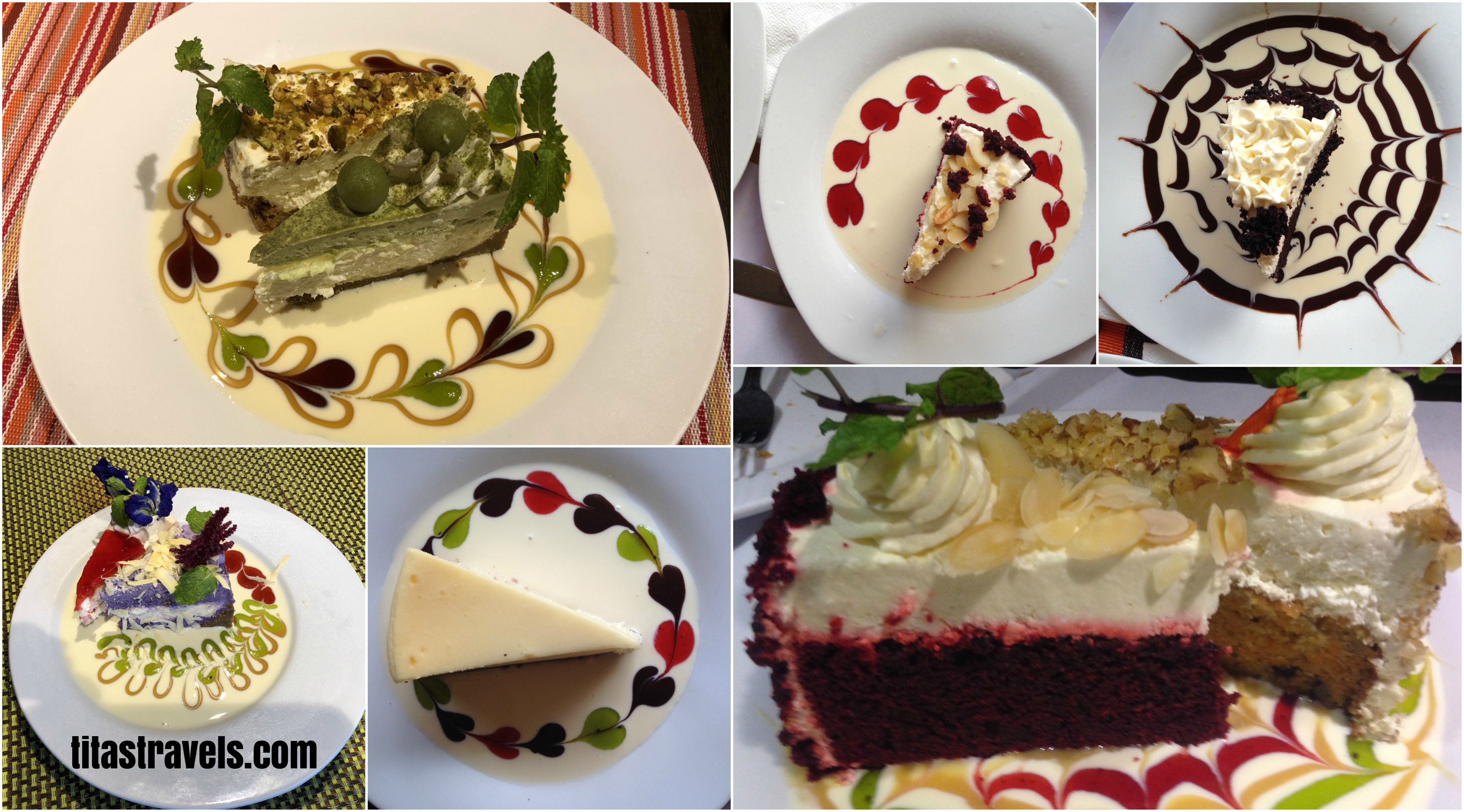 Assorted cheesecakes for my sweet tooth!
Assorted cheesecakes for my sweet tooth!